Eye miniatures were a thing about 200 years ago. These miniature portraits, usually painted with watercolor on ivory and incorporated into jewelry, focused solely on the eye. I’m sure the Flamingos weren’t singing about eye miniatures when they performed the romantic love song “I Only Have Eyes For You” but that song insists on popping into my head whenever I think about eye miniatures!
At first glance, eye miniatures might seem a little creepy but in light of the history behind them they become rather endearing. Here’s the scoop. Eye miniatures, typically depicting the eye of a spouse, loved one or child, were worn as brooches, pendants, rings and other jewelry. Here’s an example of an eye miniature set in a frame of pink stones from the Victoria & Albert Museum in London. As is often the case with eye miniatures, the painter and the subject are unknown.

Eye miniatures were also incorporated into small vessels such as toothpick holders and snuffboxes. Here’s an example of a portrait of a woman’s left eye on an elaborate memorandum case from the Philadelphia Museum of Art.

The eye is clearly depicted on these miniature paintings but the subject’s identity isn’t immediately recognizable and may only be known to the recipient. This mysterious twist, led to the term “lover’s eyes” and the practice of exchanging secret eye portraits as a token of love. The Prince of Wales (later King George IV) is credited with reviving the practice in 1785 when he sent a portrait of his eye to his clandestine lover, Maria Fitzherbert. Maria was a twice-widowed Catholic and deemed an unfit match for the future King of England. Apparently, the Prince wore Maria’s eye portrait hidden under his lapel.
Less than 1,000 of the original eye miniatures have survived. They have become a highly desirable collector’s item with several major museums including a handful in their collections (see More Info below). I first became intrigued by eye miniatures when I saw the collection at the Victoria & Albert Museum in London many years ago.
Since then I’ve learned that the largest collection of eye miniatures, the Skier Collection, is owned by a private collector in Birmingham, Alabama, USA. David Skier, an eye surgeon, and his wife Nan collected lover’s eyes for decades. Back in 2012, they shared their collection with the public when it was exhibited at the Birmingham Museum of Art and several other prominent museums around the USA. There’s a book about the collection called “The Look of Love: Eye Miniatures from the Skier Collection” by Graham C. Boettcher. Below is a collage I pulled together with eye miniatures from a Feb 24, 2012 Vanity Fair online article, called A Lover’s Gaze. I was unable to find source and photographer credits but it appears these photos are from The Look of Love book.
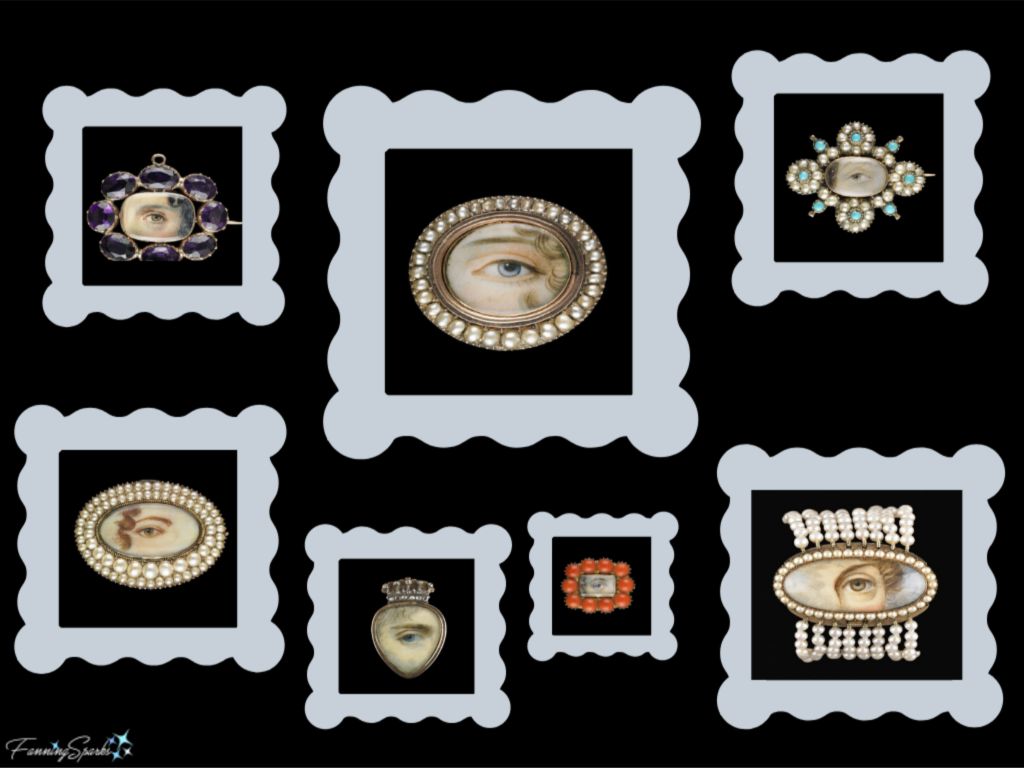
Eye Miniature Pin – DIY Tutorial
Valentine’s Day seemed the perfect time to share this story of lover’s eyes. Plus I couldn’t resist attempting to make one myself. As it turns out, with a good photo and a little polymer clay, anyone can make one of these tokens of affection to exchange with loved ones.
If you’ve never worked with polymer clay, give it a try—it’s much easier than you might think. This eye miniature pin is quite easy and quick to make. Plus it’s low cost—you just need to purchase a few supplies for about $10 US and you can use tools you probably already have around the house. Here are the detailed step-by-step instructions to make your own Eye Miniature Pin.
Supplies Needed
The following supplies are needed to make an Eye Miniature Pin:
Photo: A laser photocopy of the eye image. See Step 1 Prepare Eye Photo below for detailed specifications.
Polymer Clay: 1 package of white clay. White gives the clearest image. I like the Sculpey Premo brand but I’m sure other brands like FIMO would work equally well.
Polymer Clay: 1 package of clay for decoration. I tried a few different options including Sculpey Premo Accents in Antique Gold, Yellow Gold Glitter, Silver, and White Gold (silver) Glitter. I liked the silver glitter the best but you can use whatever color and effect you wish.
Tie Tack: 10mm pad. Alternatively, you could use a small pin back. 19mm, which was the smallest size I could find, would work fine.
E6000 adhesive
Hand Sanitizer: Small amount of clear hand sanitizer.
Baby Wipes: To clean hands and/or tools between colors.
Swarovski Crystals: These are entirely optional. I found the crystals really upped the look of the pin but they also upped the cost. I bought a package of 50 12ss Xirius Flatback Crystals and used about half of them.
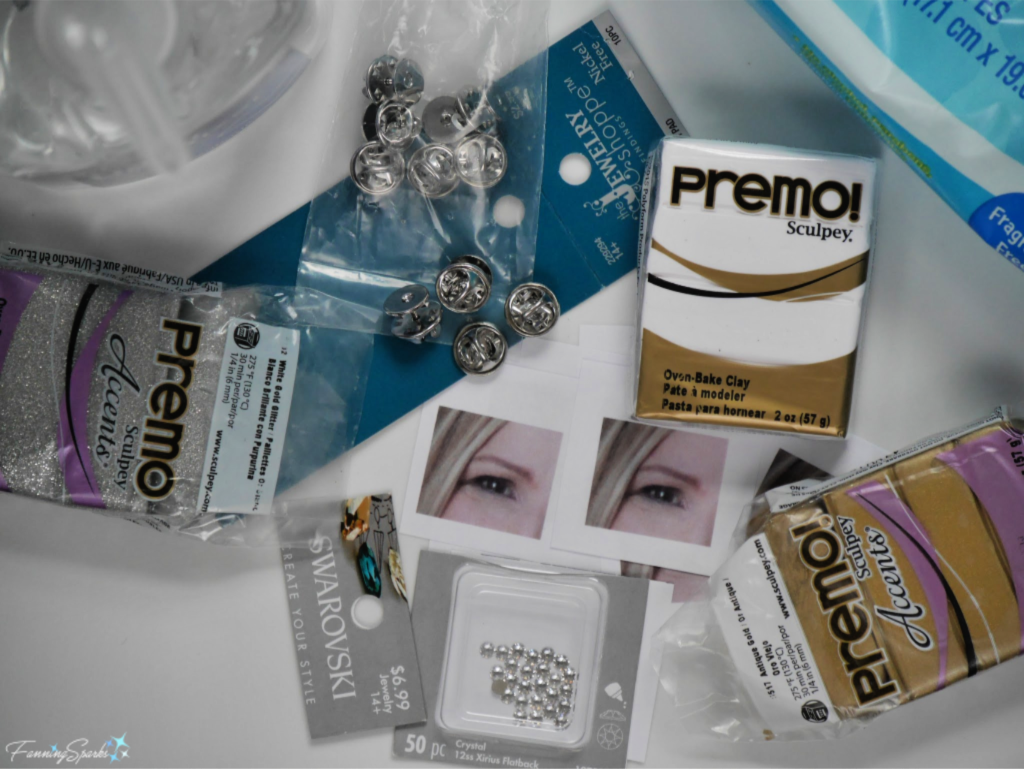
Tools Needed
Photo Editing Software or App.
Working Surface: A smooth, flat working surface. I use a 12 x 12 ceramic floor tile but a simple table surface will do. Note: Sculpey warns that polymer clay can damage fine furniture so be sure to use a barrier like wax paper or aluminum foil to protect the surface.
Baking Tile: A ceramic tile, such as a 4×4 wall tile, with a perfectly flat surface that will fit in your oven. Alternatively, you could use a piece of foil.
Roller: You can use an old wooden rolling pin, a straight, smooth round glass/jar or an acrylic roller specifically designed for polymer clay. I have the luxury of using an Amaco pasta machine/ clay conditioning machine to condition and roll my clay.
Knife: A utility knife, like an Exacto knife, will work fine. You can also use a slicing knife, which is a long slender blade, specifically designed for polymer clay.
Hard Card: An old credit card or hotel key card can be used to smooth the clay.
Oven: You can use your kitchen oven to bake the polymer clay. See specific advice taken from Sculpey’s website in More Info section below. I use an Amaco polymer clay and craft oven. Sculpey Premo must be baked at 275⁰ for 30 minutes. Be sure to check the specific instructions for the brand of clay you’re using.
Instructions for Eye Miniature Pin
Step 1 Prepare Eye Photo The most important part of this project is the photo. I tried a variety of materials and techniques before getting the results I wanted. Don’t expect to have a crystal clear photo on your eye miniature pin. Transferring the photo to polymer clay significantly reduces the quality. But by choosing a good quality photo with the following characteristics you should get a recognizable likeness on your pin:
. Image should be good quality with high resolution
. Image should be color
. Eye should be clearly focused
. Eye should have a catchlight (meaning a highlight or spot of light reflected on the eye)
. Eye should be looking at the viewer. In her book “Treasuring the Gaze”, author Hanneke Grootenboer claims it’s the subject’s gaze rather than his or her eye that makes eye miniatures special. She says “intimate vision brings the gaze of another deep into the heart of private experience”. So that’s worth considering!
Use photo editing software to crop and size the photo image. Take care not to compromise the quality of the image. I used www.canva.com which is a simplified, online graphic-design tool that can be used for free. I’m sure there are dozens of tools and apps that would accomplish the same thing. The objective is to prepare a file you can take to a Printing/ Copy Shop for printing. I had the most success with a printed eye image of 1¼” x 1”. Obviously, you can print numerous images of this size on a single sheet of paper. Don’t extend the eye to the very edges and also leave a blank border around the image. Most importantly, flip over the image horizontally (aka mirror) so it will be rendered properly on the pin. If you forget this step, like I did the first time, your eye will be reversed from real life.
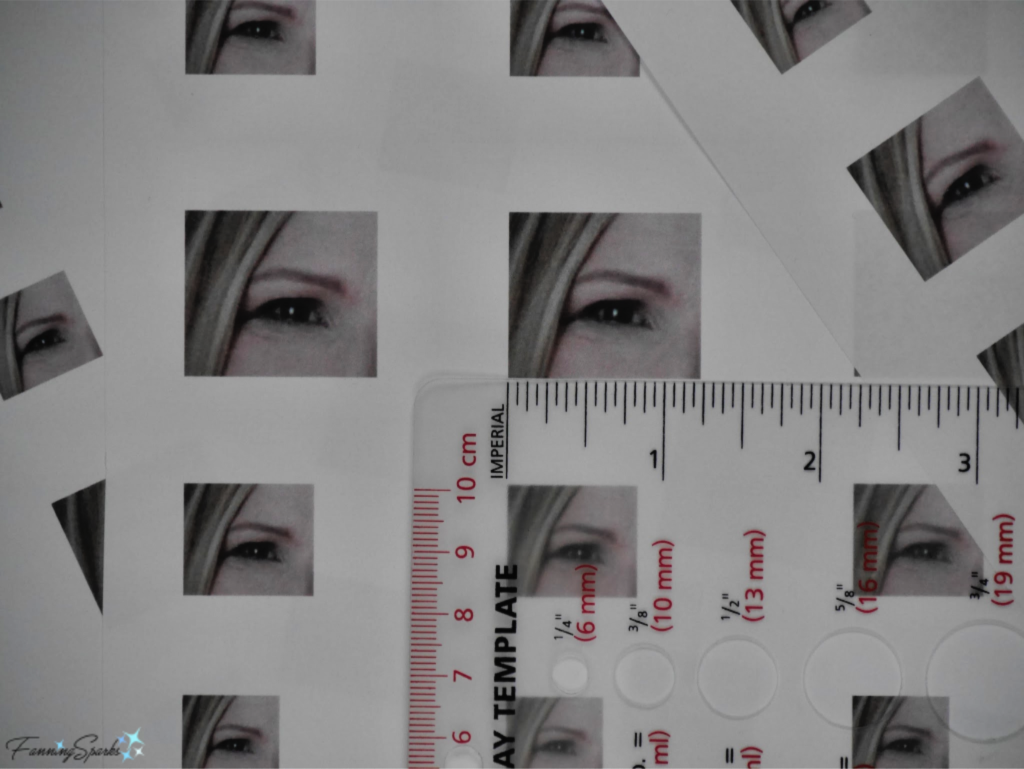
Take your prepared photo image file to a Printing/ Copy Shop to be printed. It must be laser printed (vs inkjet) on regular paper with no recycled content (vs photo paper). I had the best success with 28 lb (vs 20 lb) copy paper at Office Depot. Logically, you should be able to create the same thing on your own laser printer but, despite several attempts, I wasn’t able to achieve satisfactory results with our home printer.
TIP: Prepare several images and make a few pins. It’s easy to make more than one and it increases your chances of getting a good result.
Step 2 Prepare Polymer Clay Cut a piece off the block of white polymer clay. You’ll only need about ¼ of a block for each pin. Work the clay in your hands to condition it and make it malleable. If you’re not familiar with the basics of polymer clay, you may want to check out the advice in the More Info section below before you start. Use the roller to roll out the clay on your work surface. You want a square section about 2”x2” with a thickness of about ⅛”. Carefully, move the clay square onto the baking tile. Use the hard card to carefully smooth the surface of the clay square. It’s important to have a perfectly smooth, level surface for transferring your photo. Bumps and dents will damage the photo.
If you decided to make multiple pins, prepare a square of clay for each one.
Step 3 Transfer Photo Trim around the eye image leaving a border of about ¼”. Carefully place the eye image, face down, on the prepared clay. Press the image into place by rubbing gently with your fingertips. Use the hard card to carefully rub the image onto the clay square. Do not move the image.
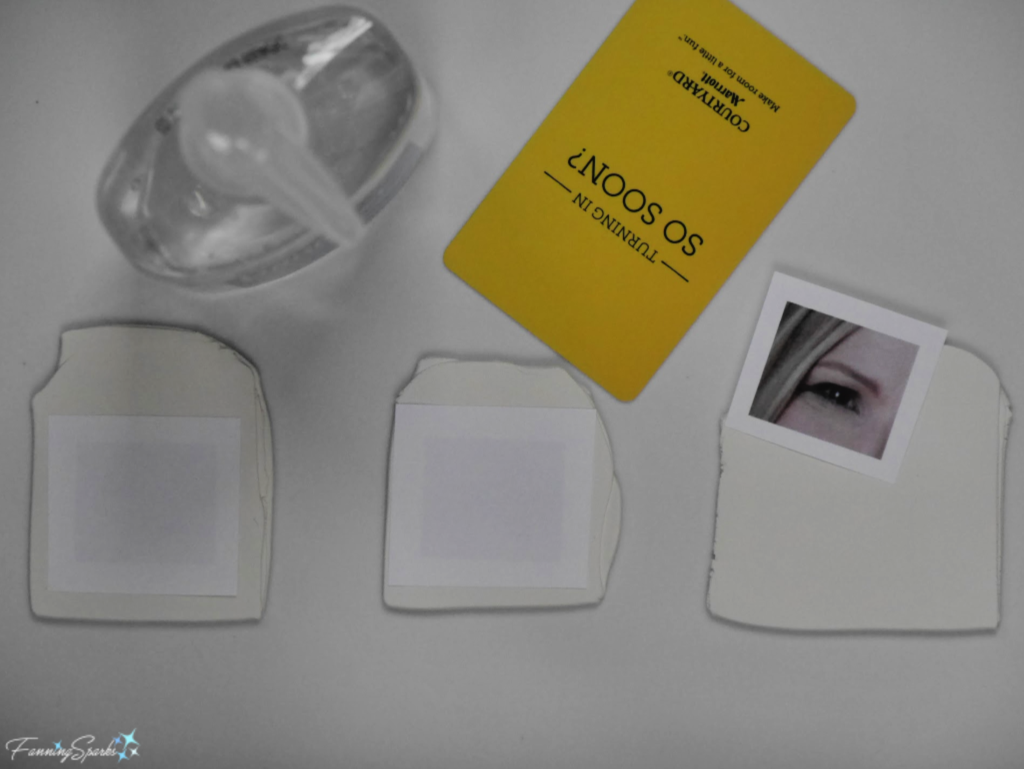
Put a few drops of hand sanitizer on the back of the paper and rub gently gliding over the entire surface. Carefully hold the image in place along its border. Take care not to press into the clay and not to move the image. Allow the hand sanitizer to evaporate. Repeat this same process, applying hand sanitizer and letting it dry, 2 more times. Always take care not to move the image.
Apply hand sanitizer one last time and rub into place. The paper is likely to start disintegrating or pilling which is OK. This time, instead of letting the hand sanitizer evaporate, carefully peel back the photo paper from the clay. The image should remain on the clay. The results are likely to vary from one clay square to the other. Notice the difference between the left and center images in the photo below, the left image is clear but the center image is smudged and damaged. I’m not sure why but I assume I either rubbed too hard or moved the image during this step.
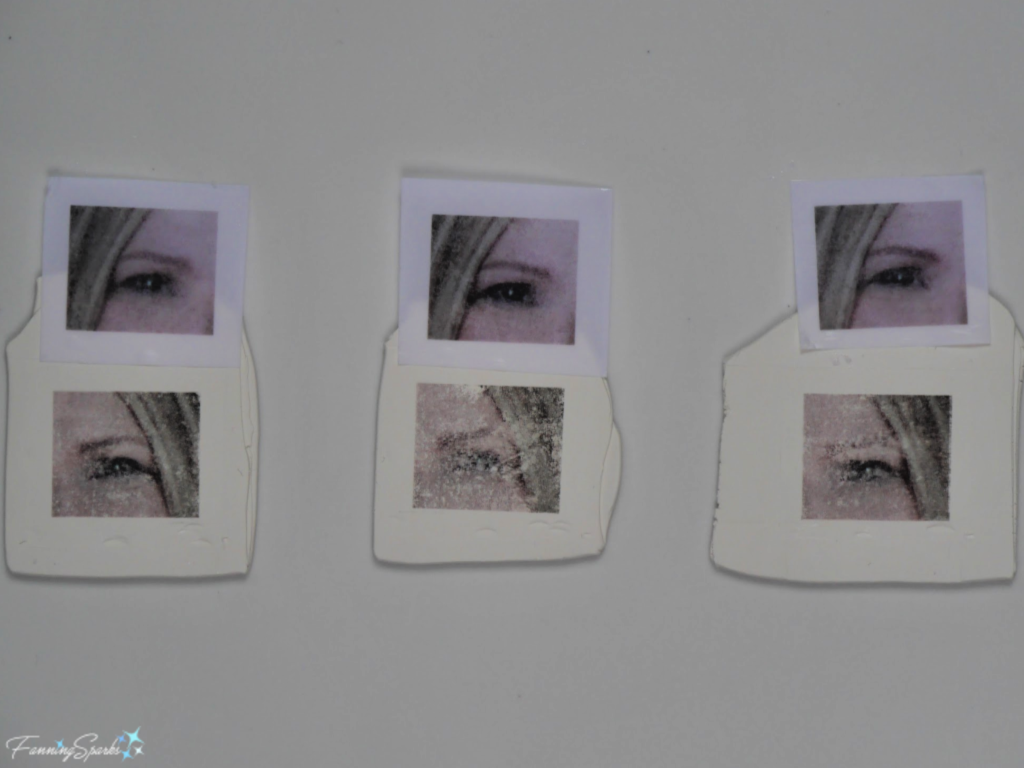
After you’ve selected the best image(s), allow the sanitizer to dry.
Step 4 Embellish Pin Now it’s time to have some fun and embellish your pin. There are endless possibilities. Have another look at the photos at the top of this post for inspiration or check out the museum websites linked in More Info below. If you wish to shape your pin into something other than a square/rectangle, this is the time to cut it into the desired shape. I simply used scissors and a piece of scrap paper to try a few options for shape and size.
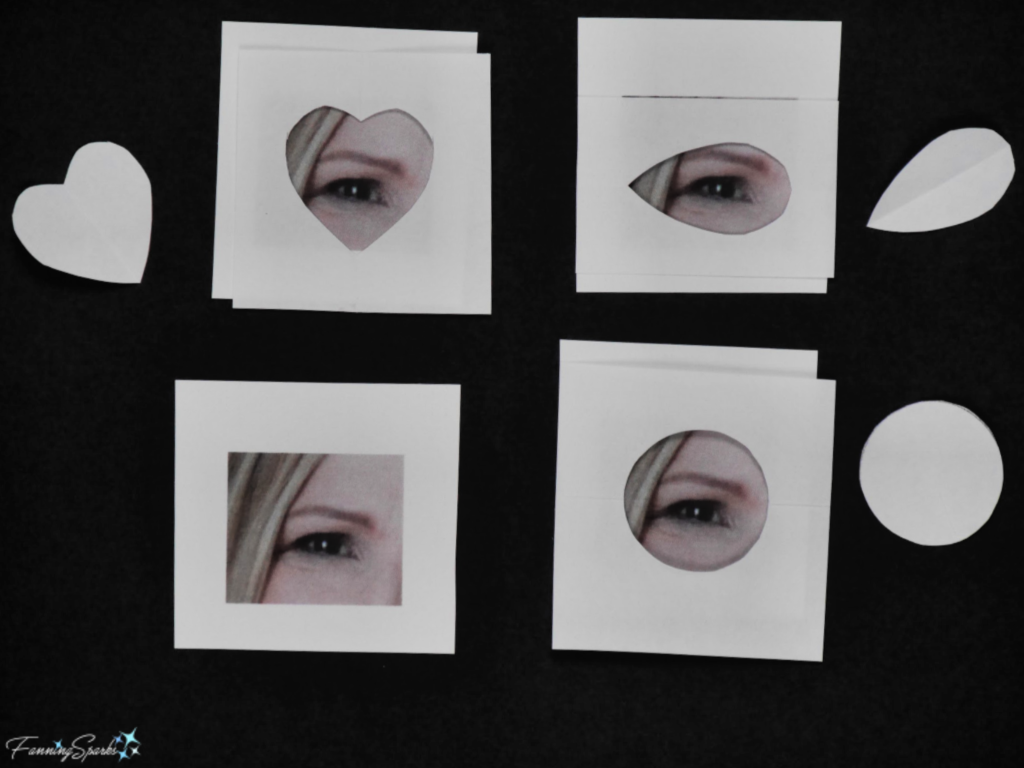
Taking care not to touch or distort the transferred image, use the knife to trim away the edges. It’s best to remove all the white clay. Then add on a slender frame in a decorative colored polymer clay. To do this, cut off a piece of the polymer clay to condition and roll it in the same way as you did the white clay (see Step 2 Prepare Polymer Clay). Cut thin strips of the decorative colored clay and trim to fit around the transferred image. As noted in the Supplies Needed section, I tried a few different options including Sculpey Premo Accents in Antique Gold, Yellow Gold Glitter, Silver, and White Gold (silver) Glitter. In this photo, I’m using the Antique Gold.
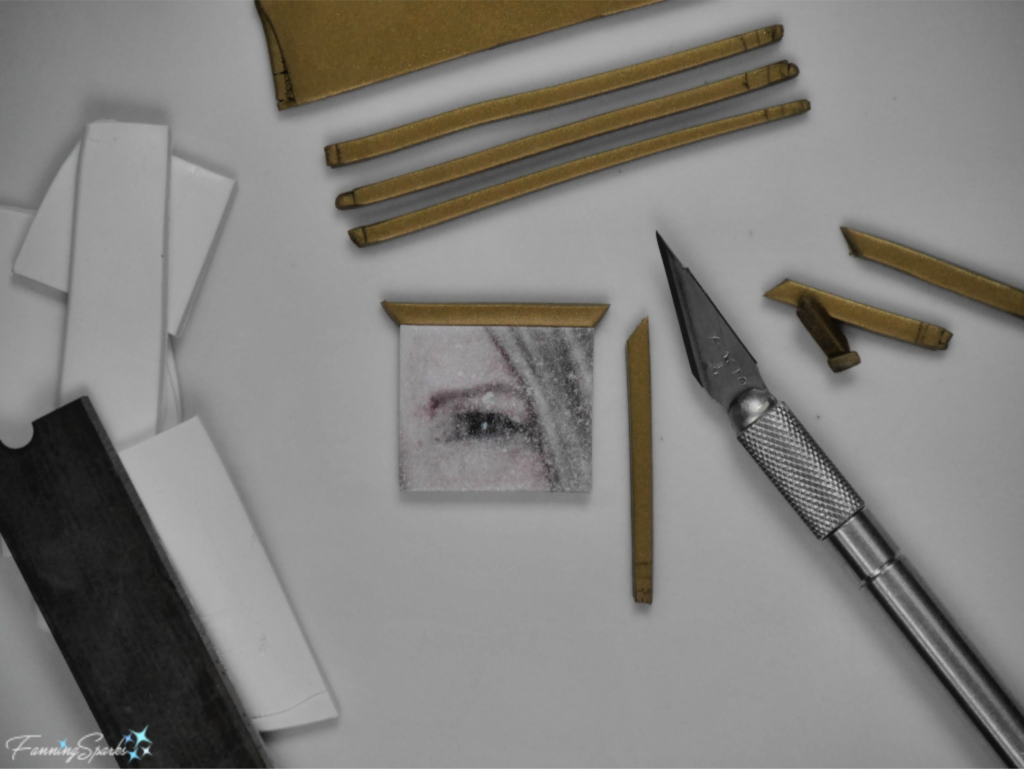
Add any additional embellishments. You could add another layer of decorative colored clay to build up the frame around the photo. Another option is to roll a thin coil of clay and twist it for added interest. Then lay sections of the twisted coil on top of the frame. You could add beads or crystals along the edge—just insure they are made of glass so they won’t melt when you bake the clay. Yet another option is to make tiny beads as shown below. Start with thin strips of clay, slice into mini-cubes and then roll cubes into balls and lay beads around the image.
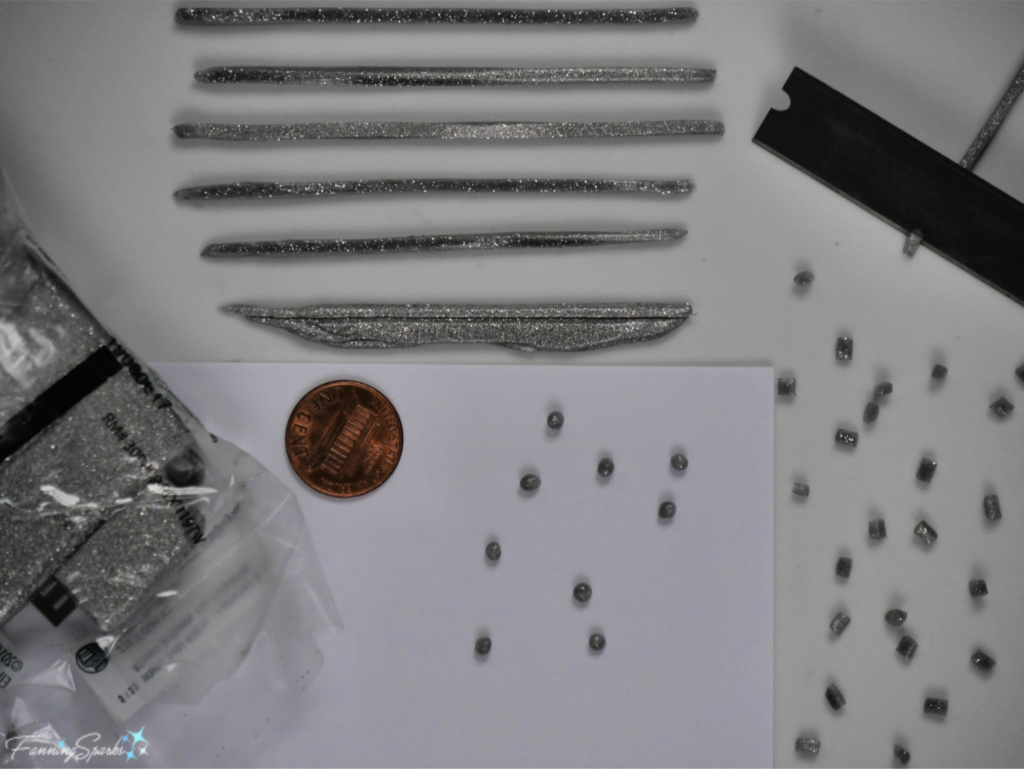
Step 5 Bake Clay
Preheat the oven to the recommended temperature (eg Sculpey Premo is baked at 275⁰ for 30 minutes). Place the baking tile with the clay in the oven for the recommended time. Remove from oven and allow to cool.

Step 6 Attach Back
Use E-6000 adhesive to attach a tie tack to the back of your Eye Miniature Pin.
After a lot of experimentation, I’m quite pleased with my final Eye Miniature Pin . I liked the below embellishment option the best—a White Gold (silver) Glitter frame with a single row of tiny Swarovski Crystals.
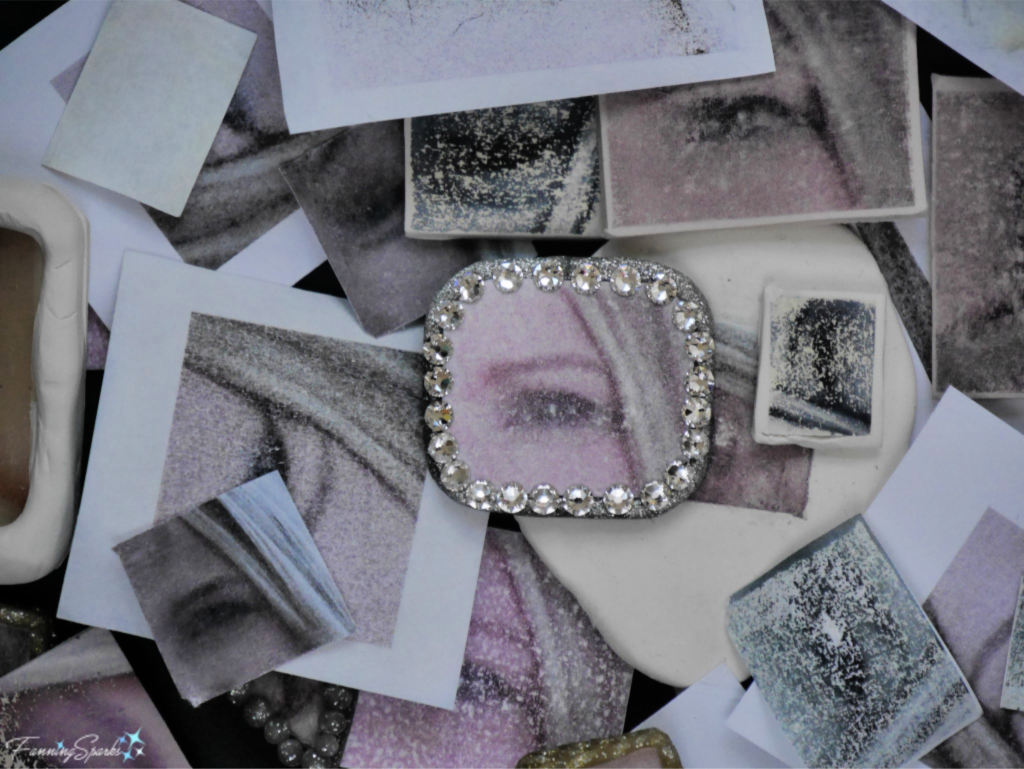
More Info
You can see more Eye Miniatures in the online collections of several museums including:
. Victoria and Albert Museum, London, UK
. Statens Museum for Kunst, Denmark
. The Metropolitan Museum of Art, New York
. Philadelphia Museum of Art
This Feb 24, 2012 Vanity Fair article, A Lover’s Gaze, includes a slideshow of eye miniatures.
The below excerpt about Polymer Clay Basics is from the FAQ section on the Sculpey website.
“How Do You Use Polymer Clay?
In a variety of ways! No matter what you create, however, you’ll follow a few consistent steps:
. Condition your clay: Before working with polymer clay, you want to condition it, which helps with its flexibility. Knead and stretch the polymer clay with your hands, or use a pasta machine.
. Protect your surface area: Grab some wax paper, disposable foil or a metal baking sheet to protect your work area, as polymer clay can affect certain finishes. If you have a glass or marble workspace, however, you’re good to go without any protective material.
. Bake your creation: All you need to bake your polymer clay creation is your household oven — you can use a toaster oven too. Pre-heat your oven of choice to the recommended temperature. Check your temperature with a pre-baking test or oven thermometer before popping your creation inside on a piece of foil or a baking sheet.
. Sand, buff, paint and glaze your design: After your polymer clay has finished baking, take it out to cool and cure. Once it’s cooled, buff and sand your creation before painting and sealing it with a glaze.
. Store your clay: Following your crafting session, make sure you store your leftover clay in a cool, dry area. Aim to use a container or bag made of polypropylene plastic — if you see the number five recycling symbol on the bottom of the bin, then its polypropylene plastic.”
Today’s Takeaways
1. Seek out obscure fads and customs from the past for inspiration.
2. Polymer clay is a versatile medium that’s fun, easy and inexpensive.
3. Consider exchanging eye miniatures this Valentine’s Day.



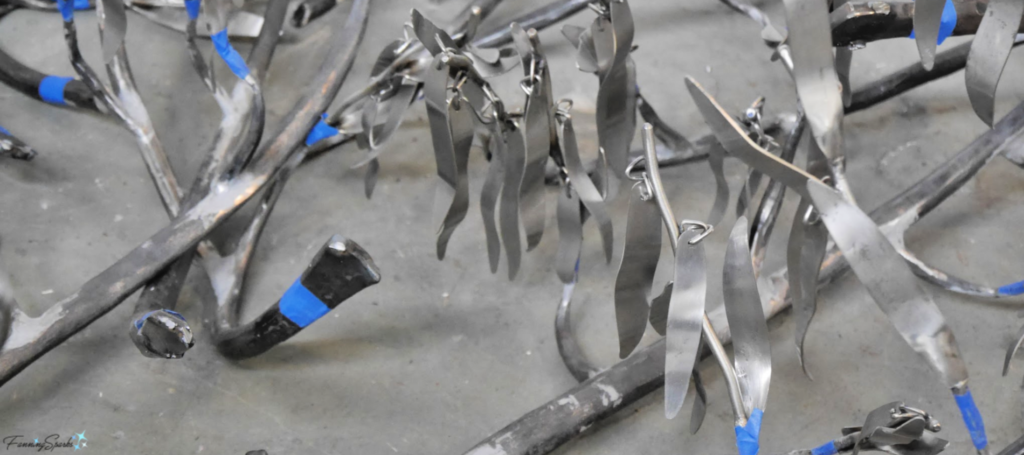
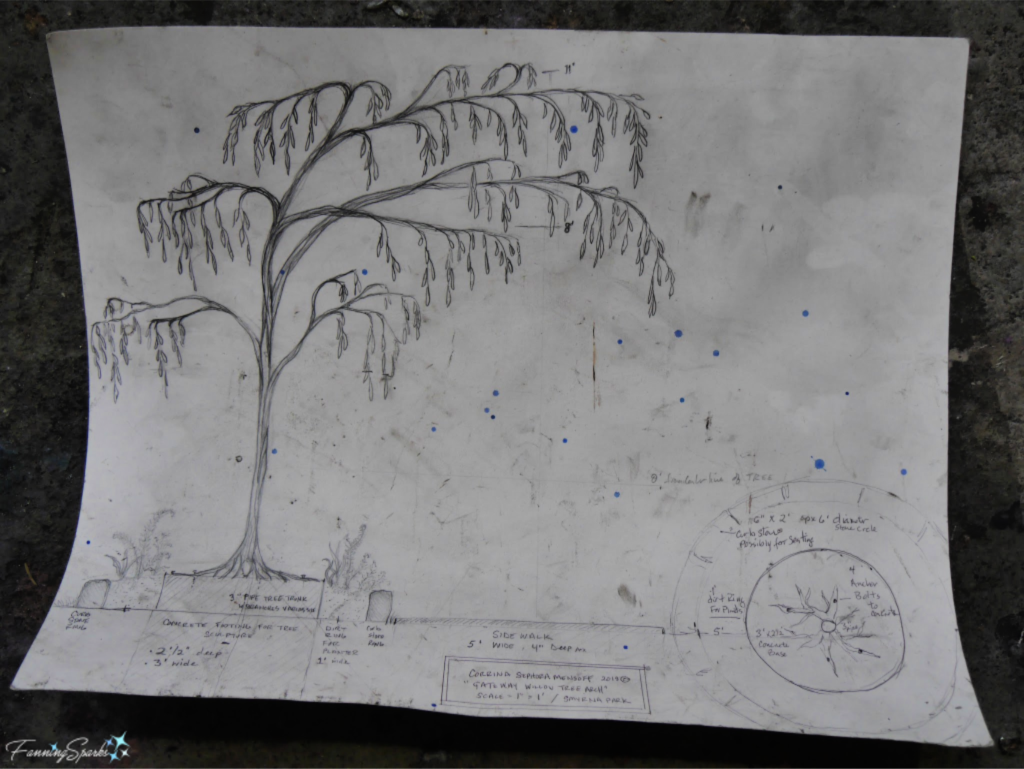 The work was obviously in flight with numerous components evident around the studio. The main tree trunk and branches, made of fabricated mild steel, was erected in the studio.
The work was obviously in flight with numerous components evident around the studio. The main tree trunk and branches, made of fabricated mild steel, was erected in the studio.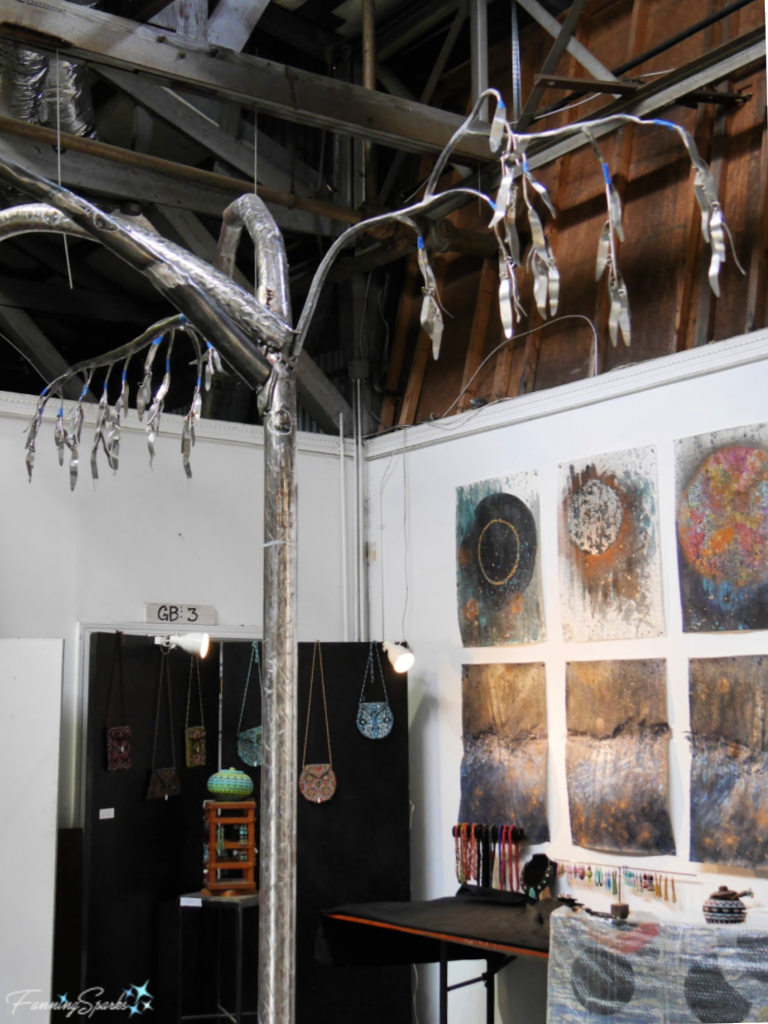
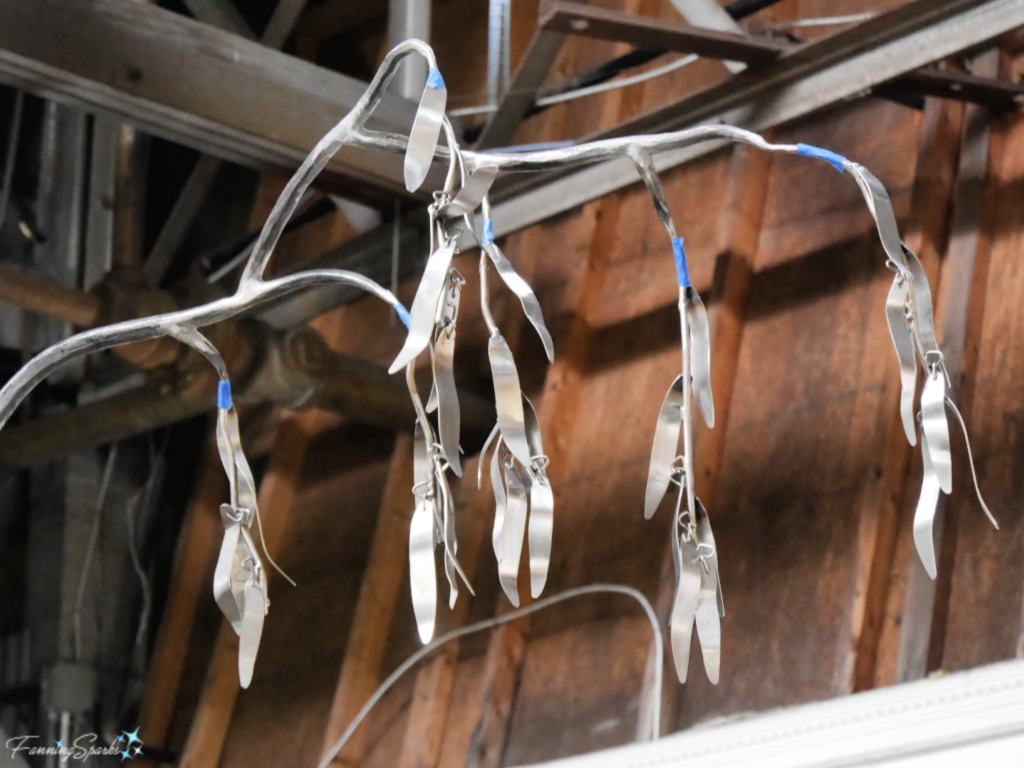 The leaves, hundreds of them, were custom-made by waterjet cutting.
The leaves, hundreds of them, were custom-made by waterjet cutting.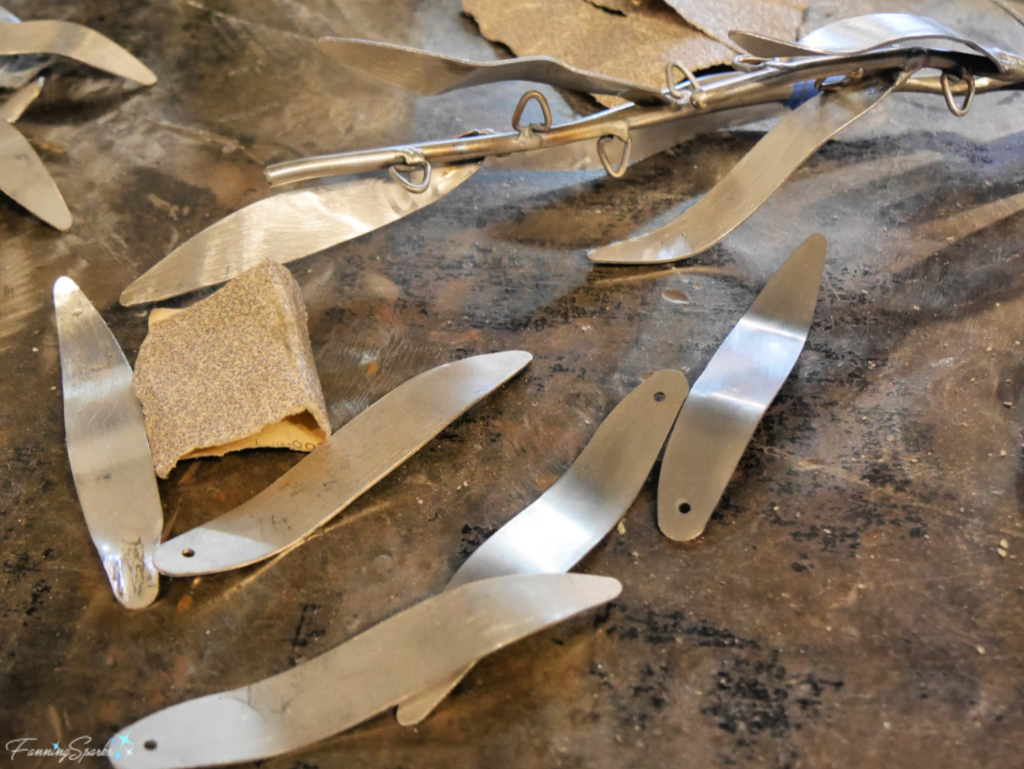 Corrina and her team, Richard and Miriam, explained that we’d be working in 3 pods or teams. Each team would focus on a different task—one group would shape, sand and attach leaves, another group would seal welded seams, and the final group would paint the mild steel sections of the branches as indicated by blue painter’s tape.
Corrina and her team, Richard and Miriam, explained that we’d be working in 3 pods or teams. Each team would focus on a different task—one group would shape, sand and attach leaves, another group would seal welded seams, and the final group would paint the mild steel sections of the branches as indicated by blue painter’s tape.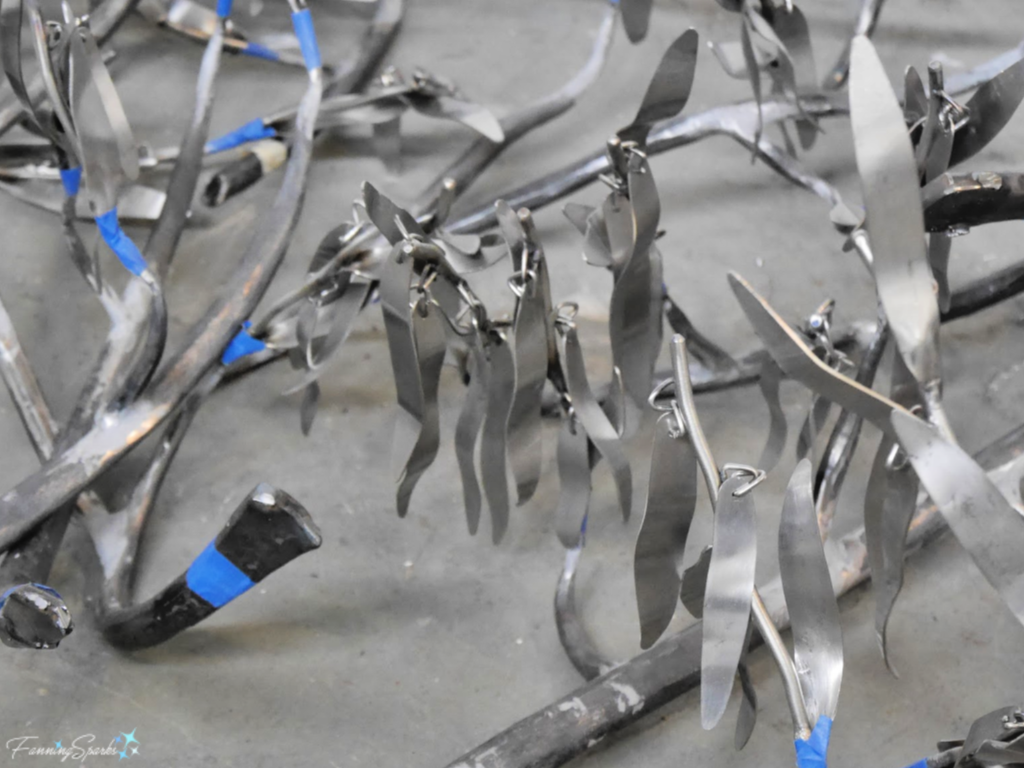
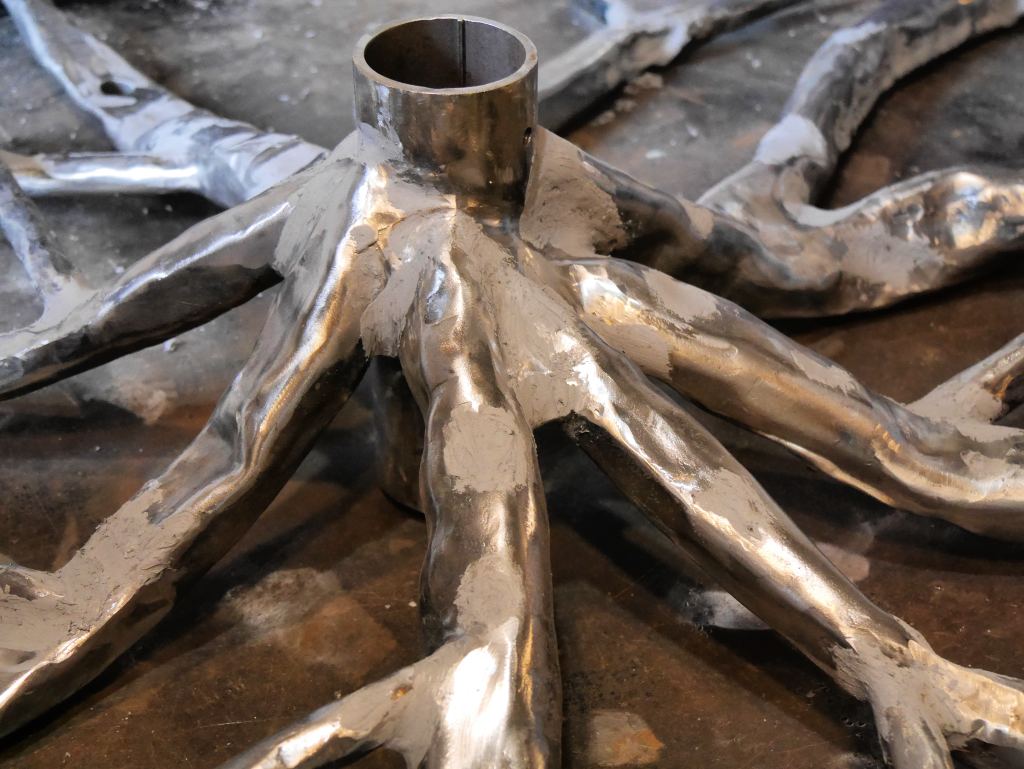
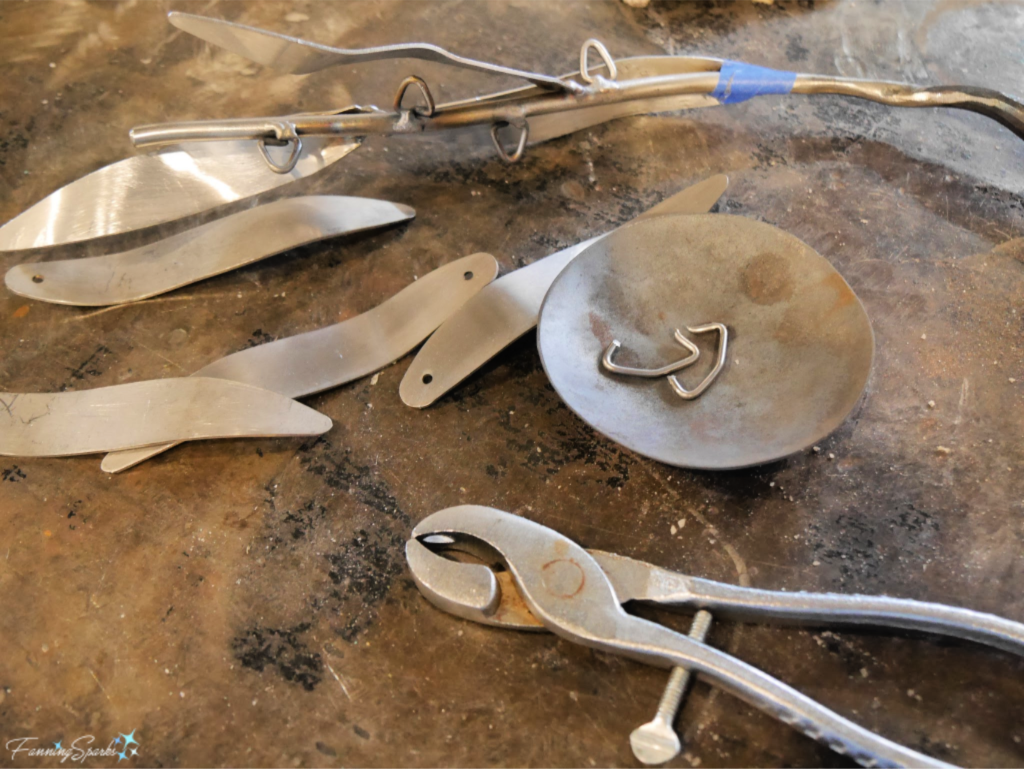 Our group made good progress and finished the painting and sealing by early afternoon. A second team of volunteers joined just as the paint and Bondo had dried enough to roll into the next steps of the process.
Our group made good progress and finished the painting and sealing by early afternoon. A second team of volunteers joined just as the paint and Bondo had dried enough to roll into the next steps of the process.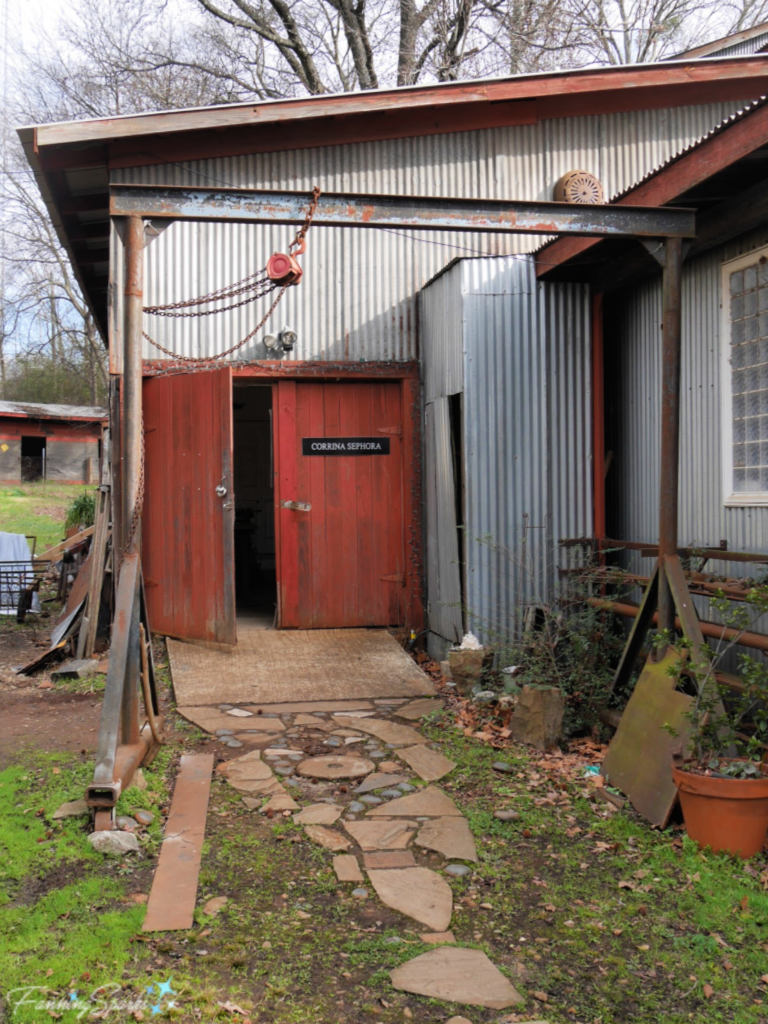
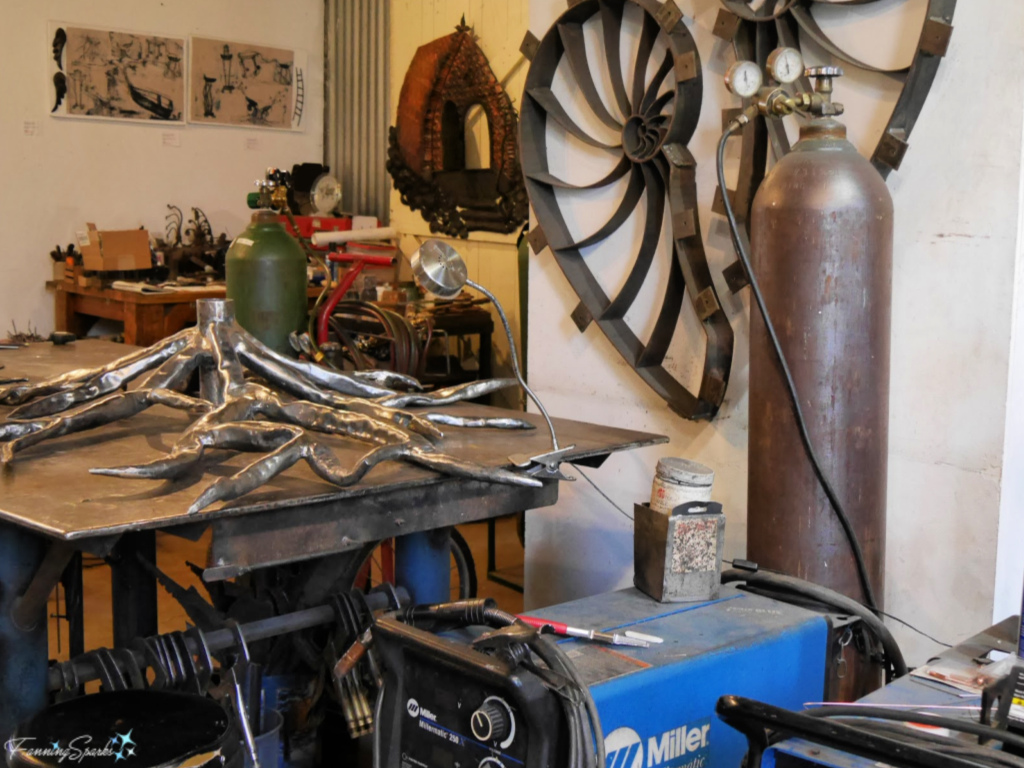
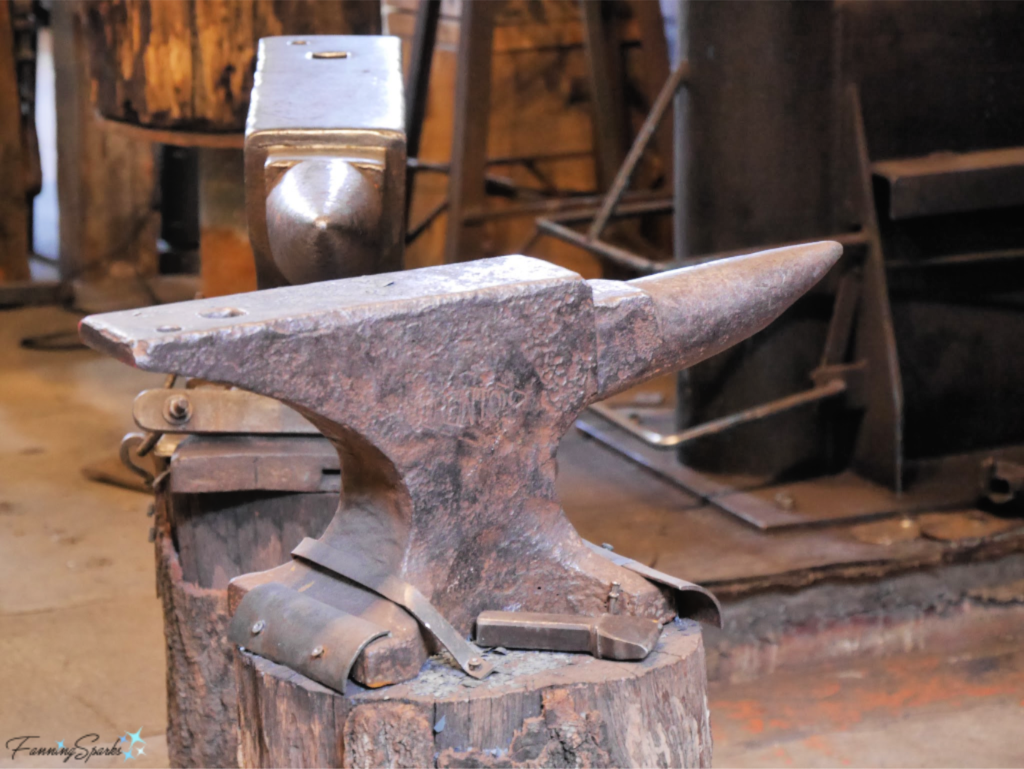

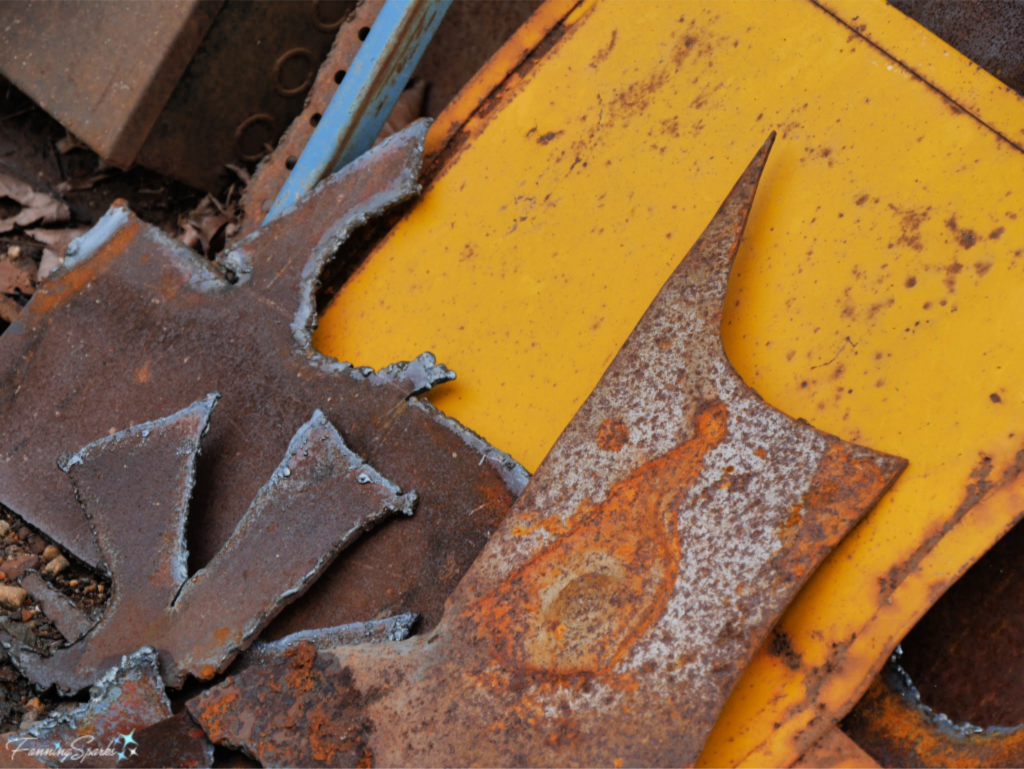
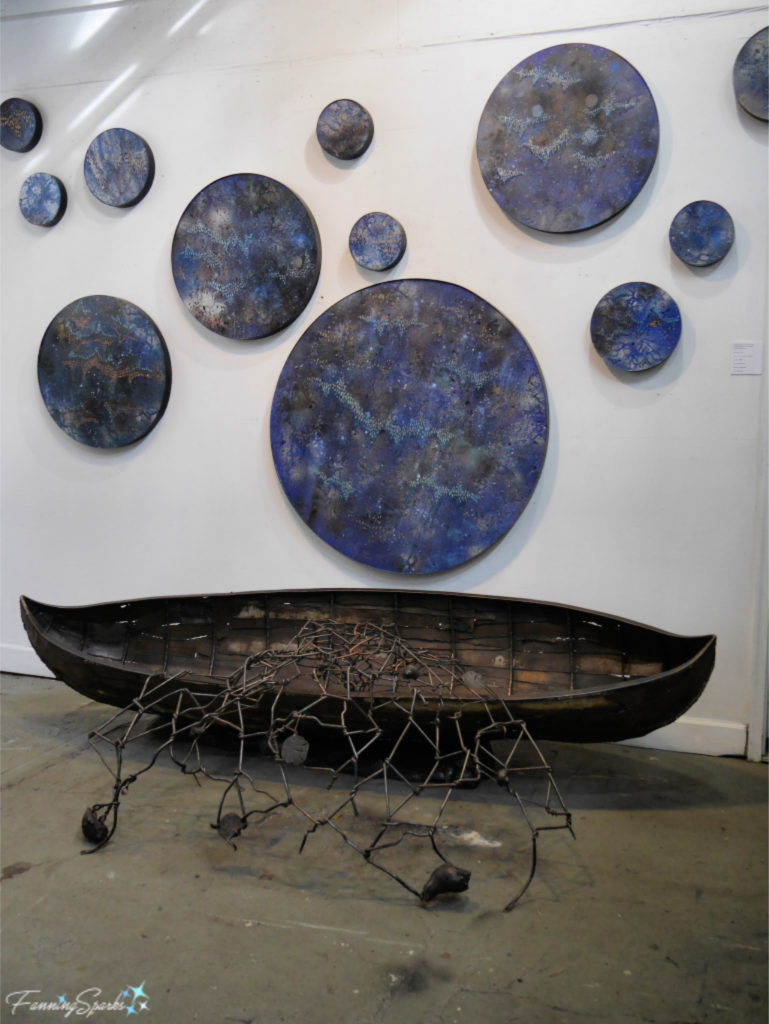
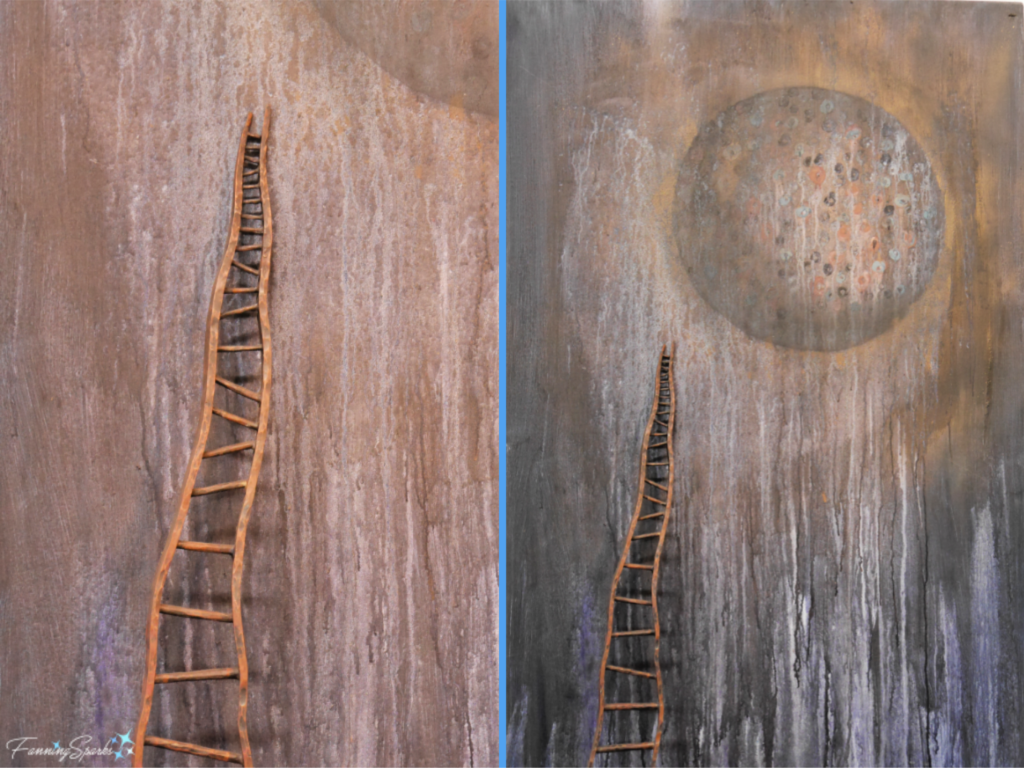 The below artwork is part of Corrina’s body of work called “Blood of the Earth” in which she is “setting the metal free through the process of transforming these weapons of violence into something new.” When asked on the Today Maybe Forever Podcast about her intention in exhibiting this work, Corrina explained her objective was to trigger a community conversation for change.
The below artwork is part of Corrina’s body of work called “Blood of the Earth” in which she is “setting the metal free through the process of transforming these weapons of violence into something new.” When asked on the Today Maybe Forever Podcast about her intention in exhibiting this work, Corrina explained her objective was to trigger a community conversation for change.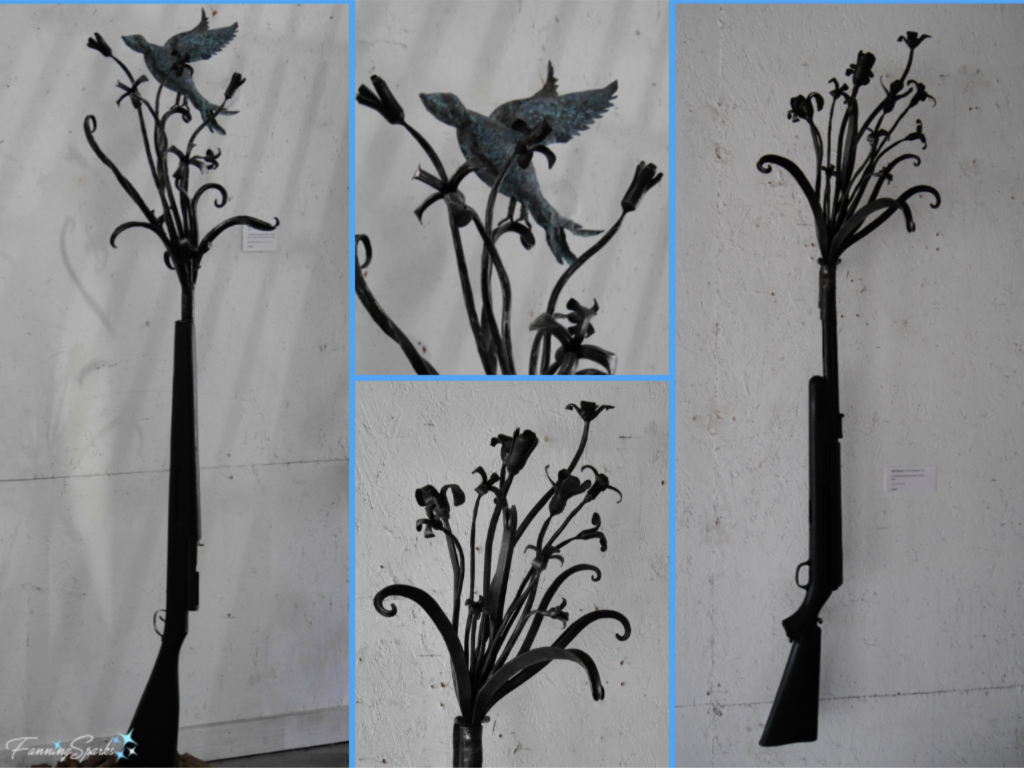
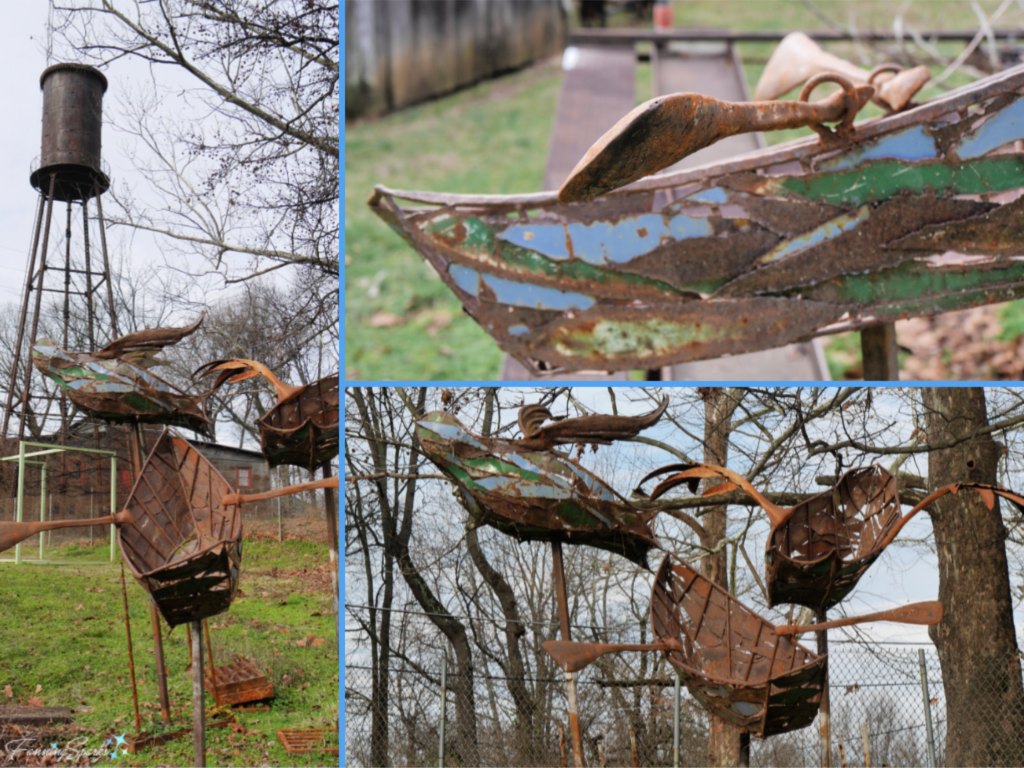
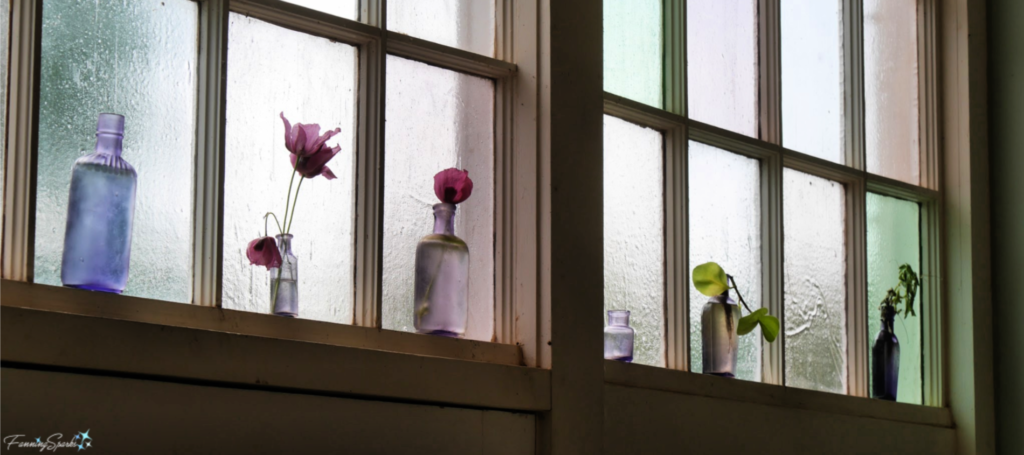

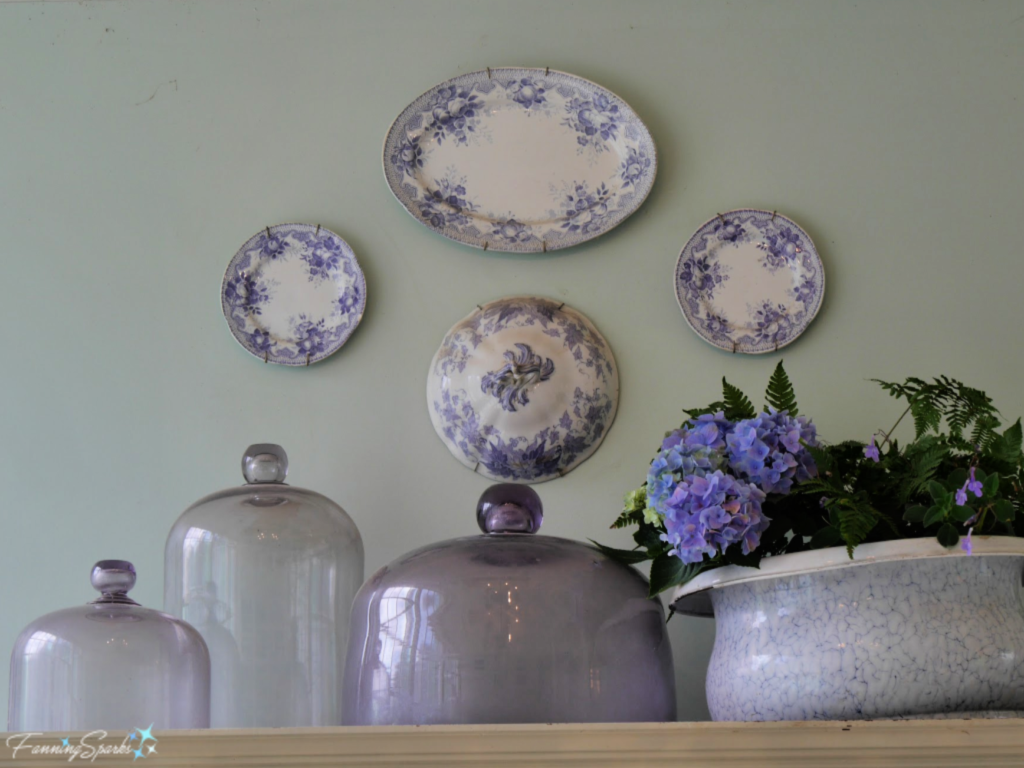
 A collection of prints, all featuring cranes and local birds, was the focal point of the foyer in last year’s Southern Living Idea House. Similar, but not identical, mattes and frames connect the prints and tie it all together.
A collection of prints, all featuring cranes and local birds, was the focal point of the foyer in last year’s Southern Living Idea House. Similar, but not identical, mattes and frames connect the prints and tie it all together. In the same Idea House, the seating area of the living room featured several collections. Anyone who loves to read will appreciate how the designer wove a significant collection of books into this setting. Several outstanding pieces of blue and white pottery have been artfully incorporated into the space. The grouping of pillows on the sofa could also be considered a small collection.
In the same Idea House, the seating area of the living room featured several collections. Anyone who loves to read will appreciate how the designer wove a significant collection of books into this setting. Several outstanding pieces of blue and white pottery have been artfully incorporated into the space. The grouping of pillows on the sofa could also be considered a small collection.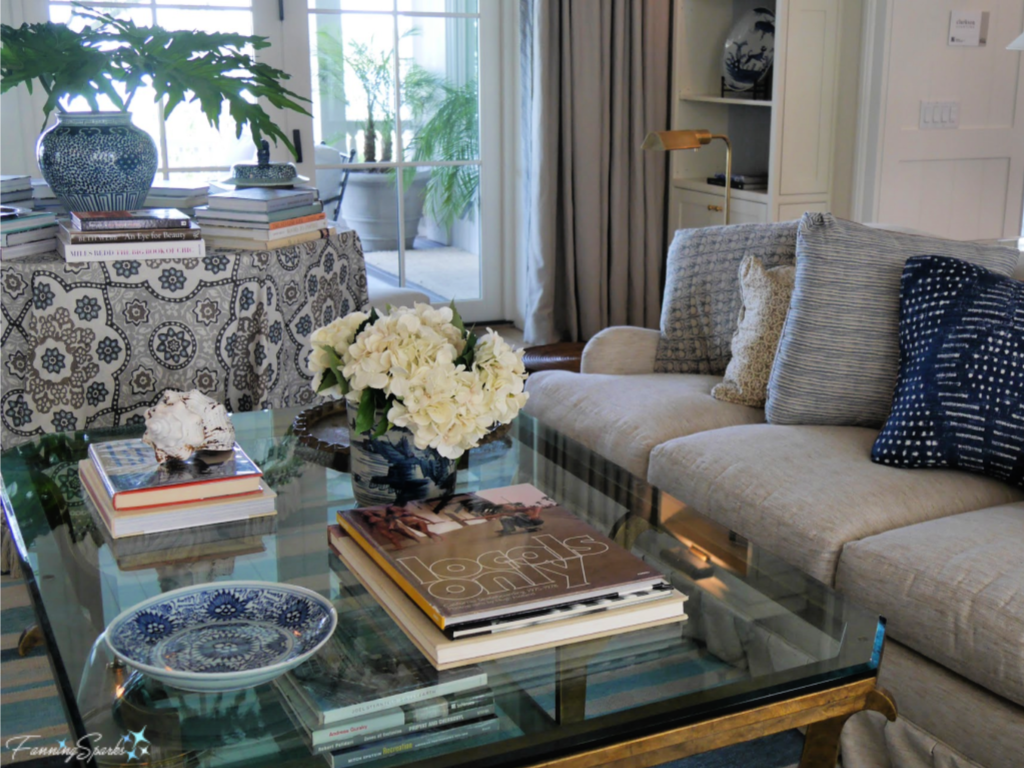
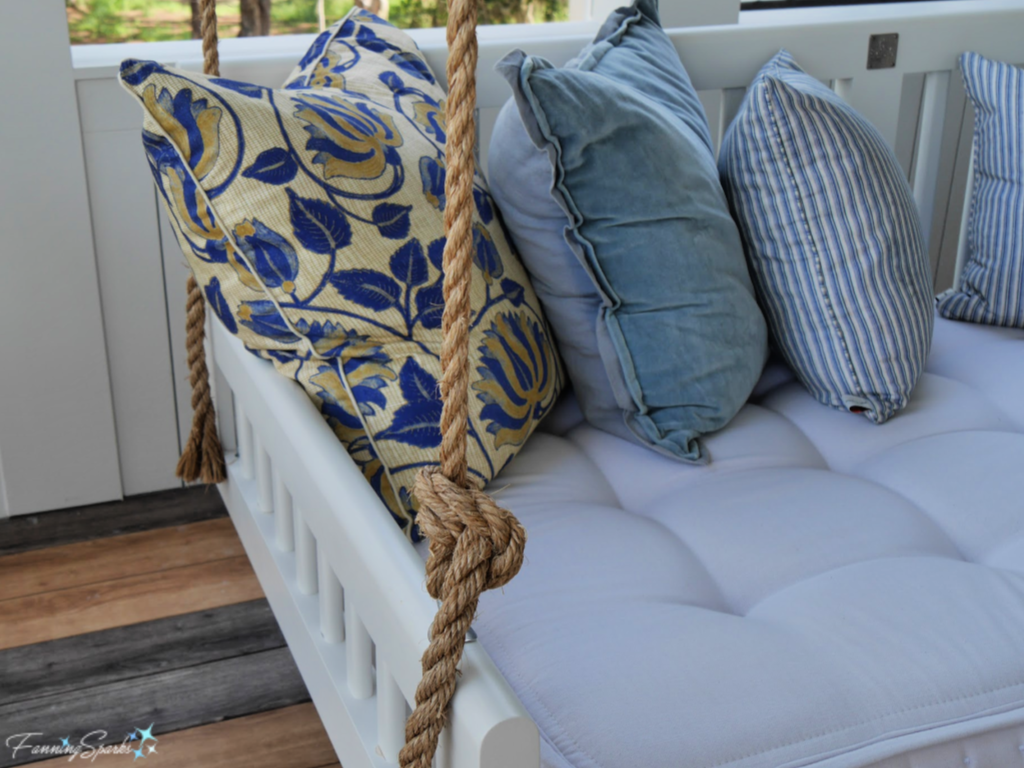
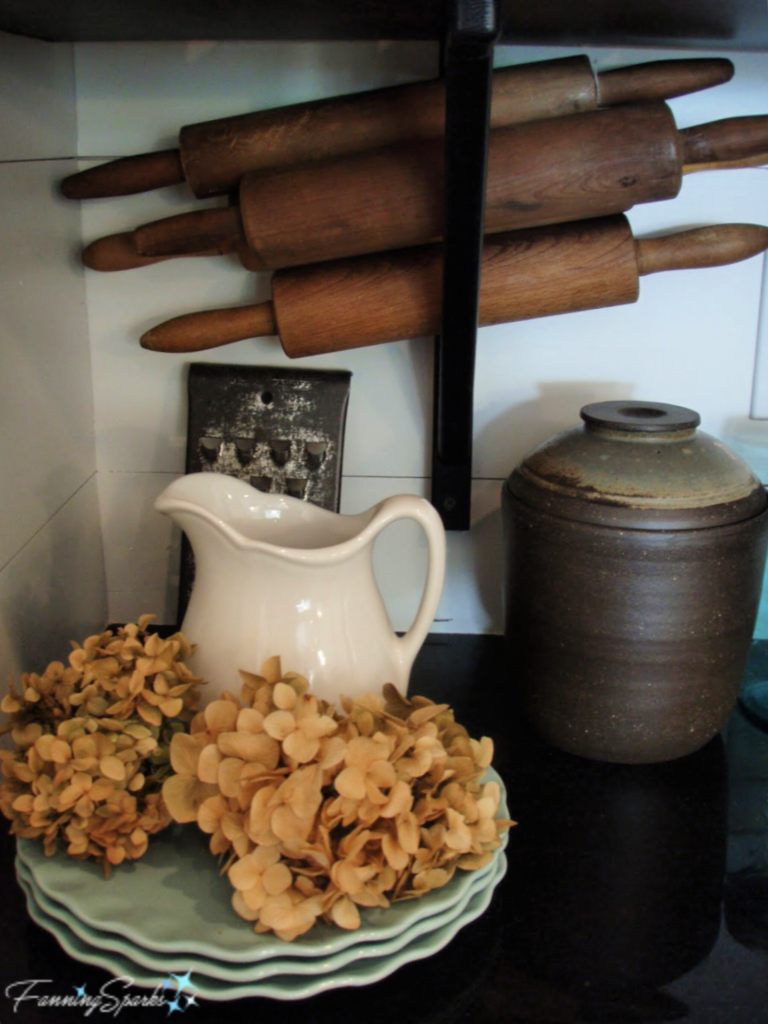


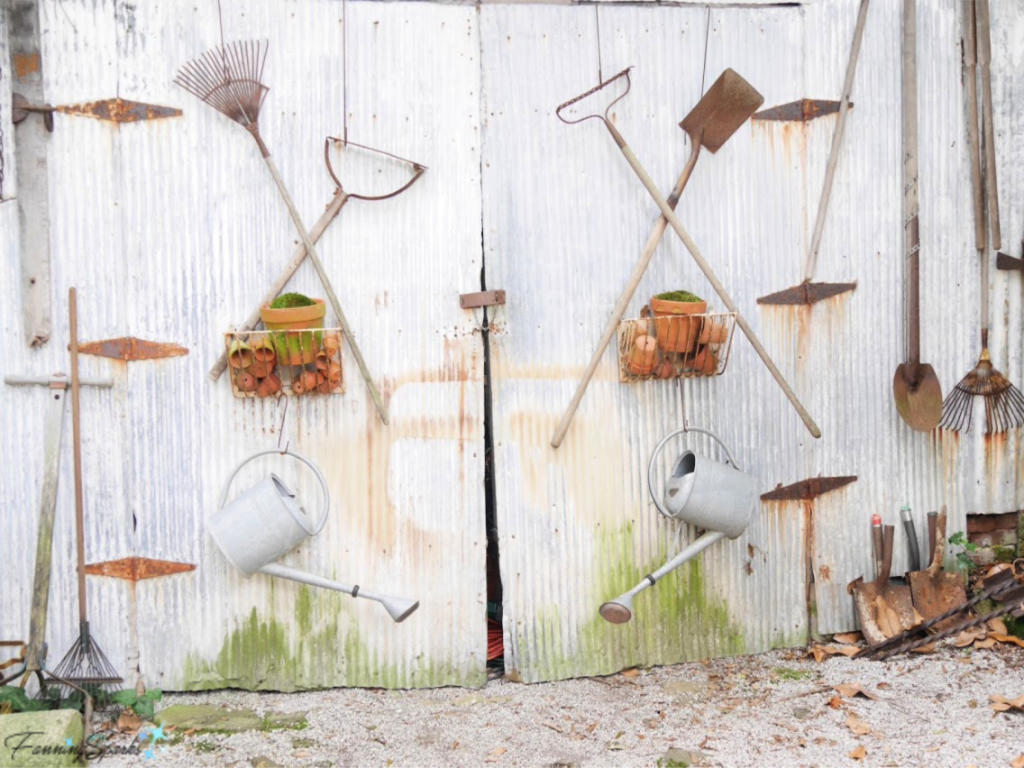
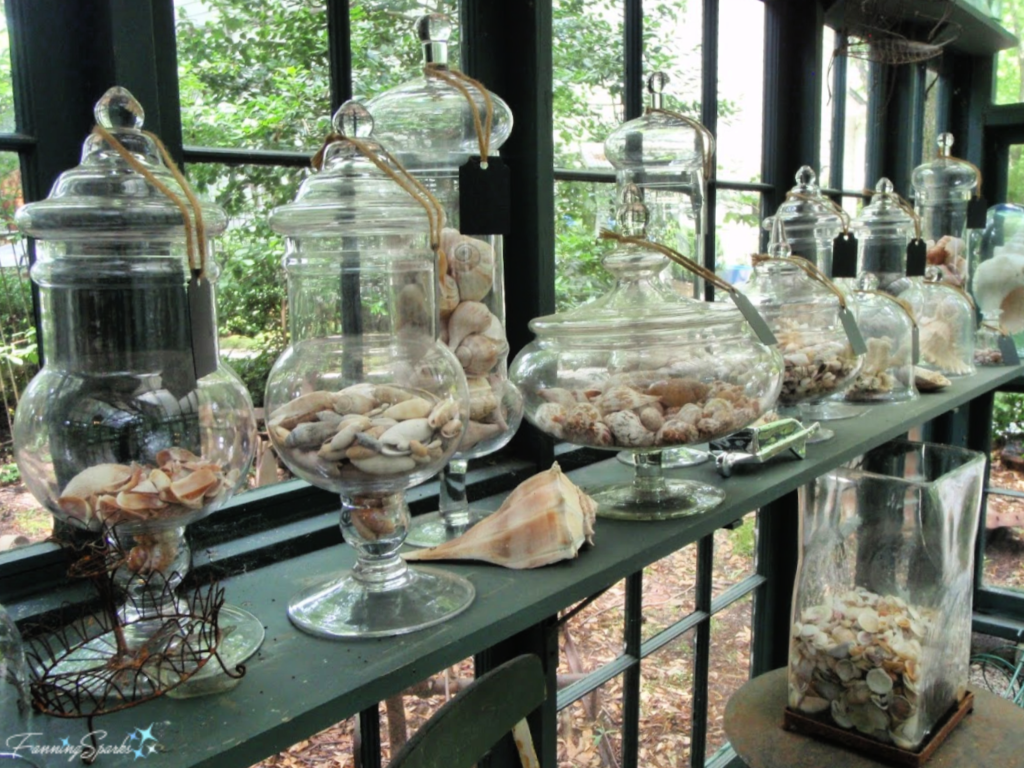
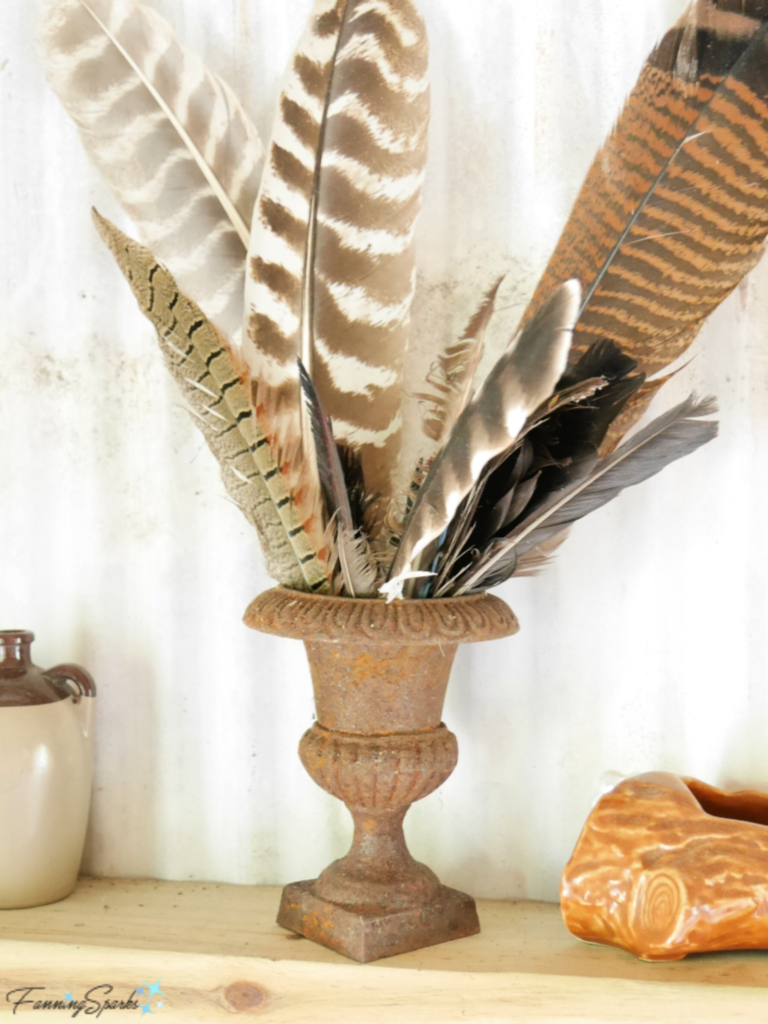
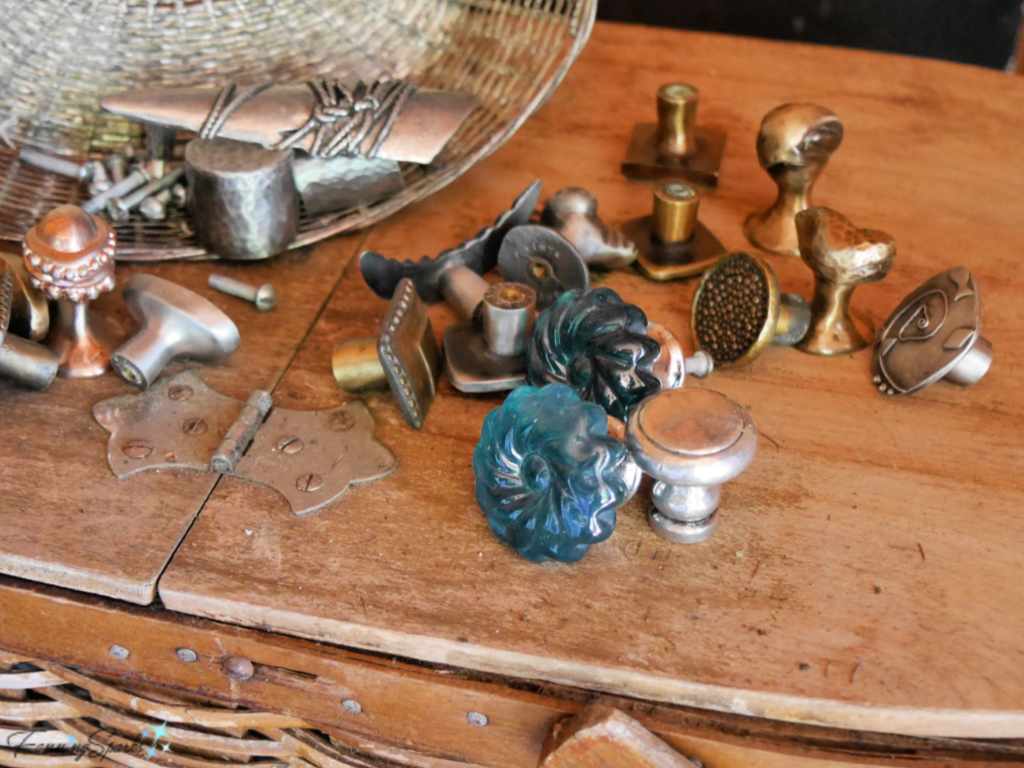
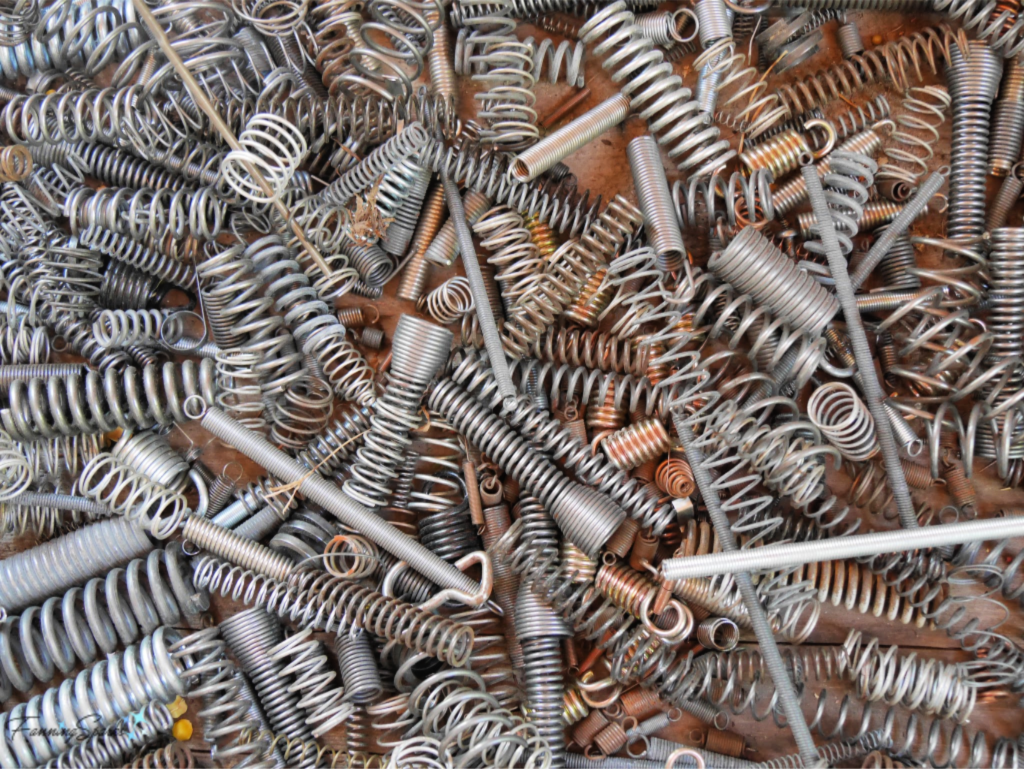
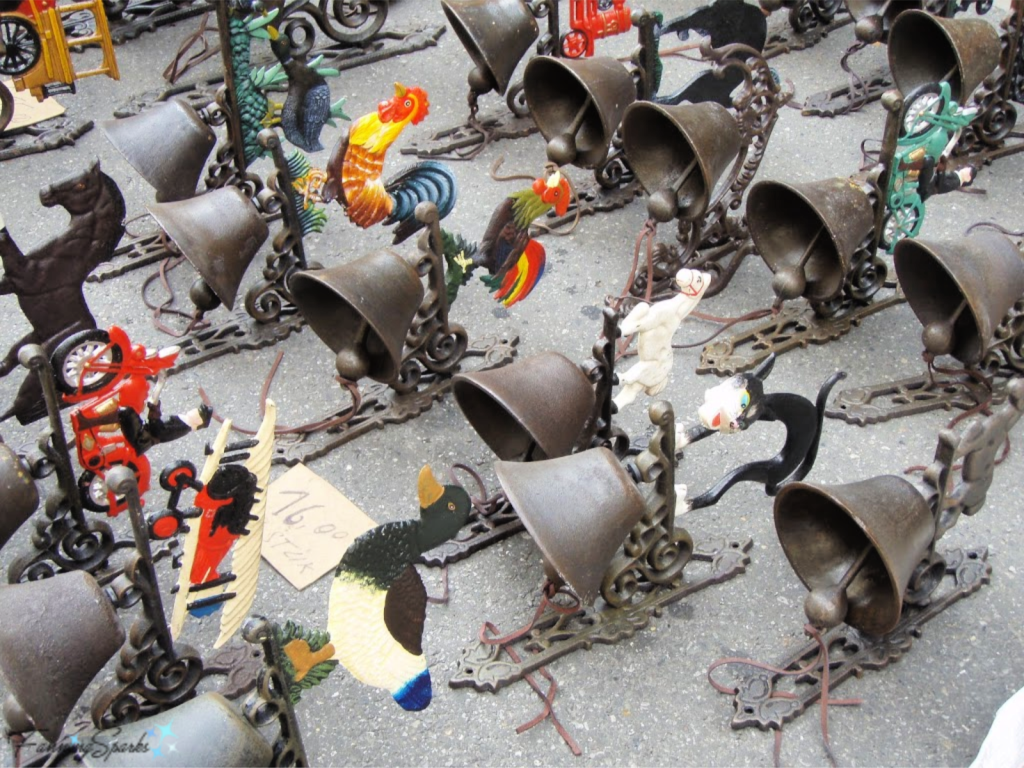 … wooden stamps…
… wooden stamps…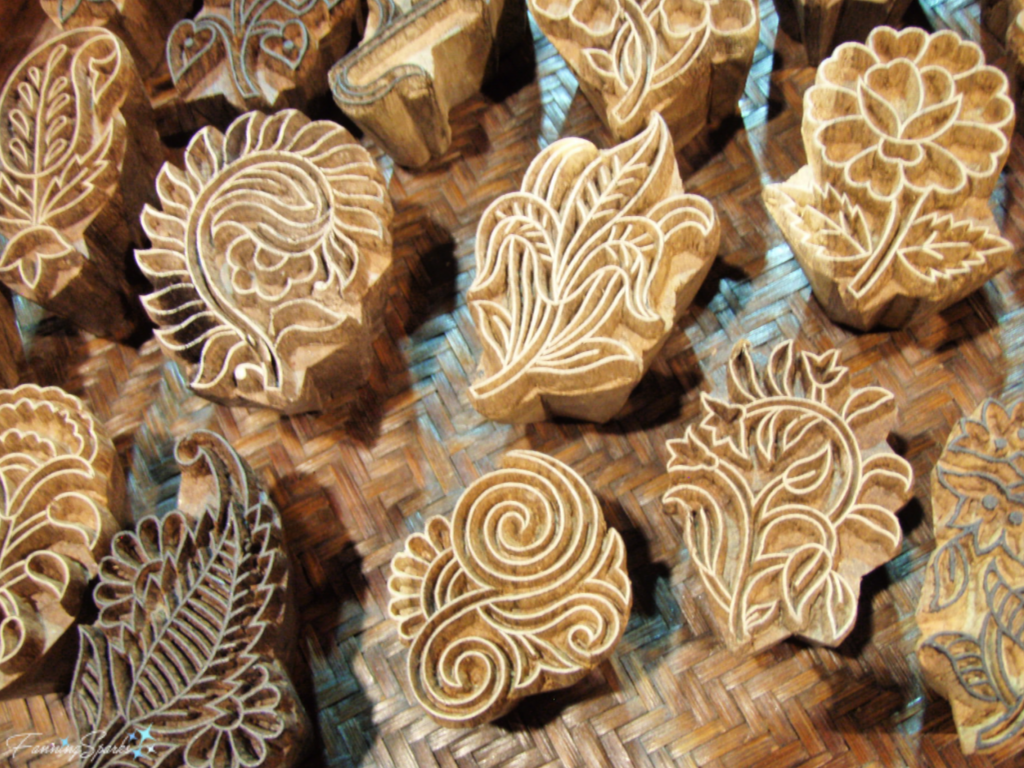
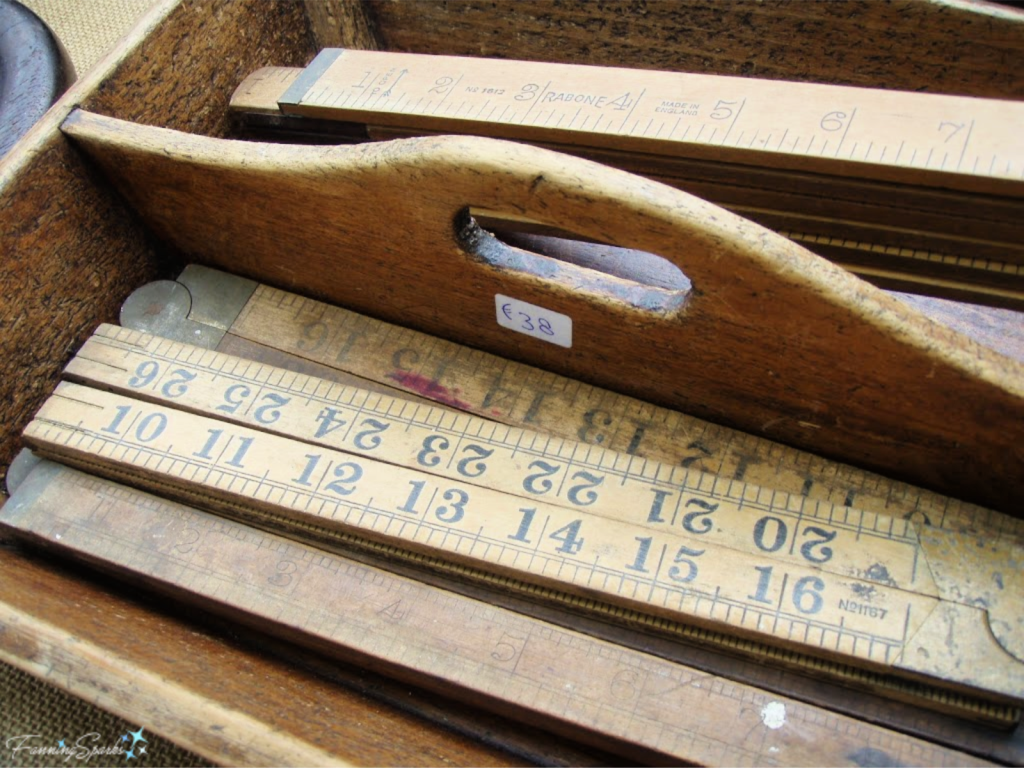

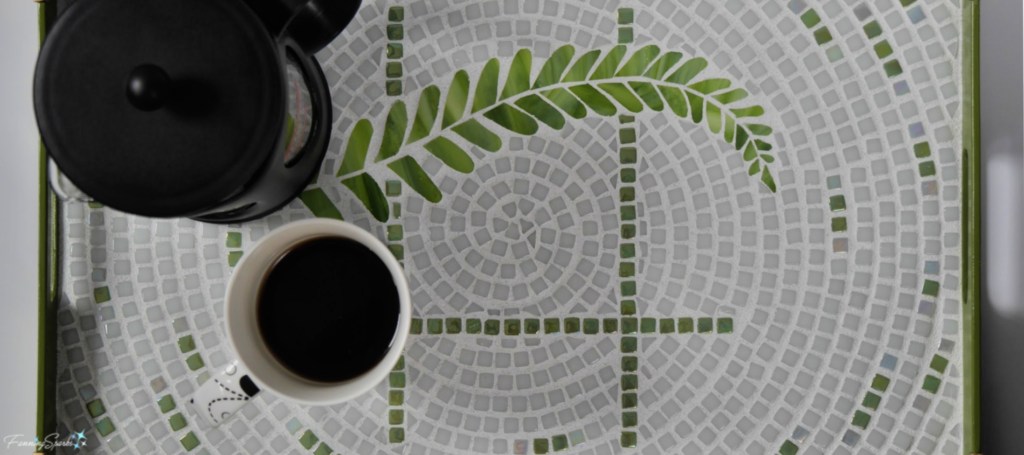
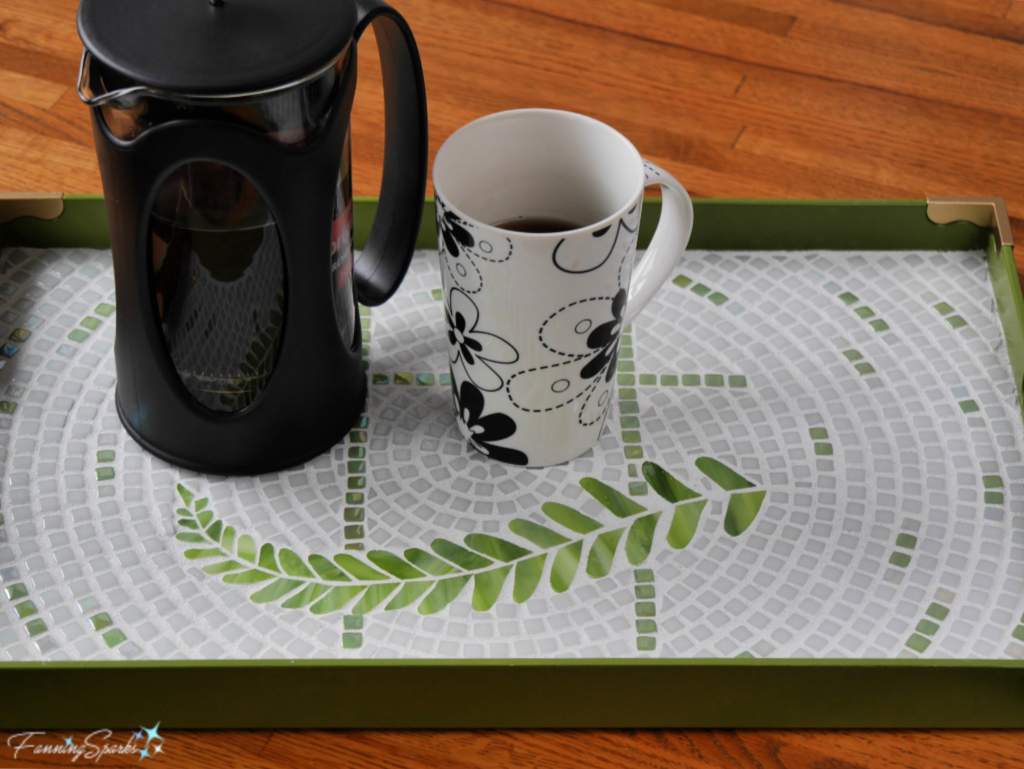
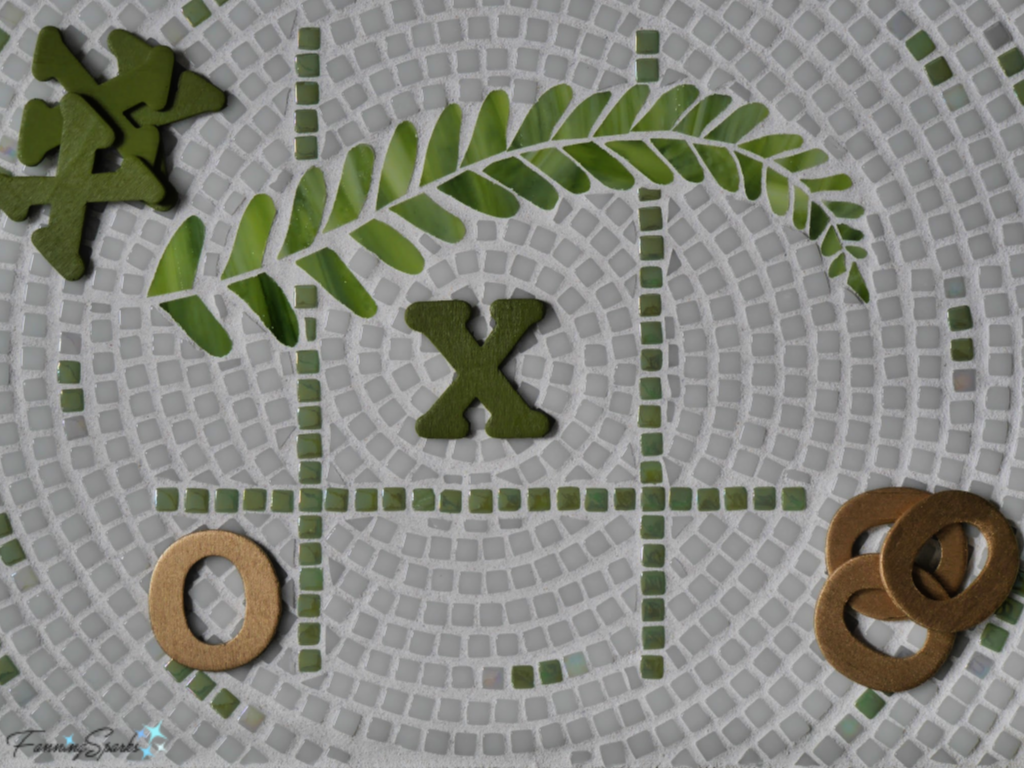

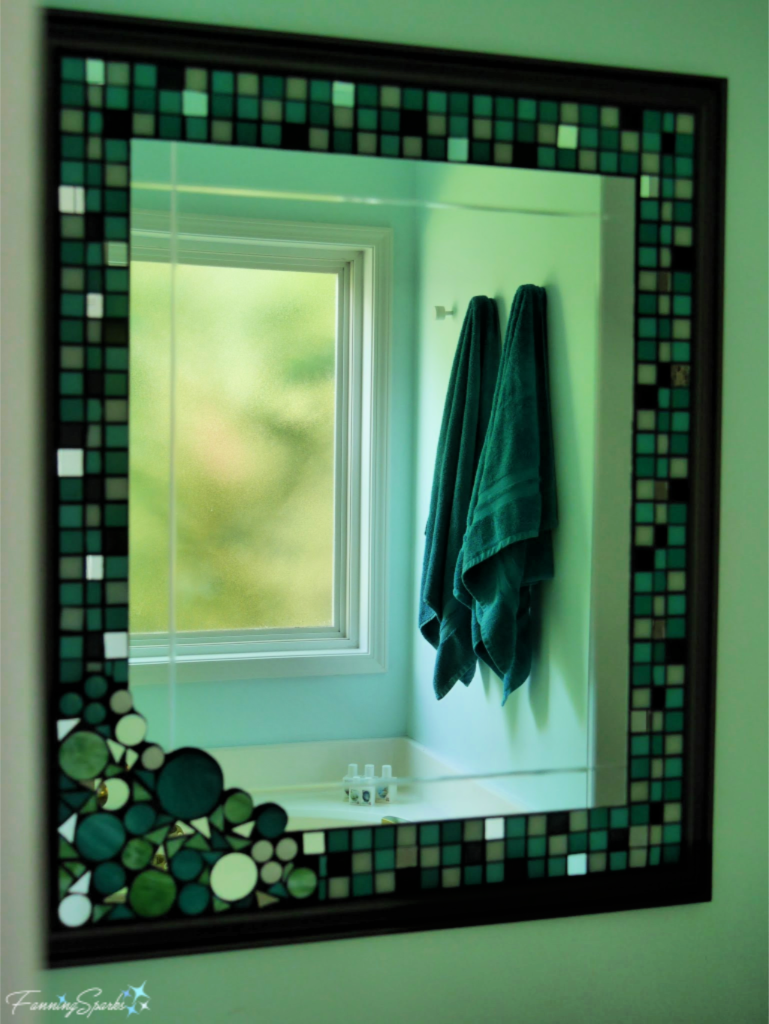
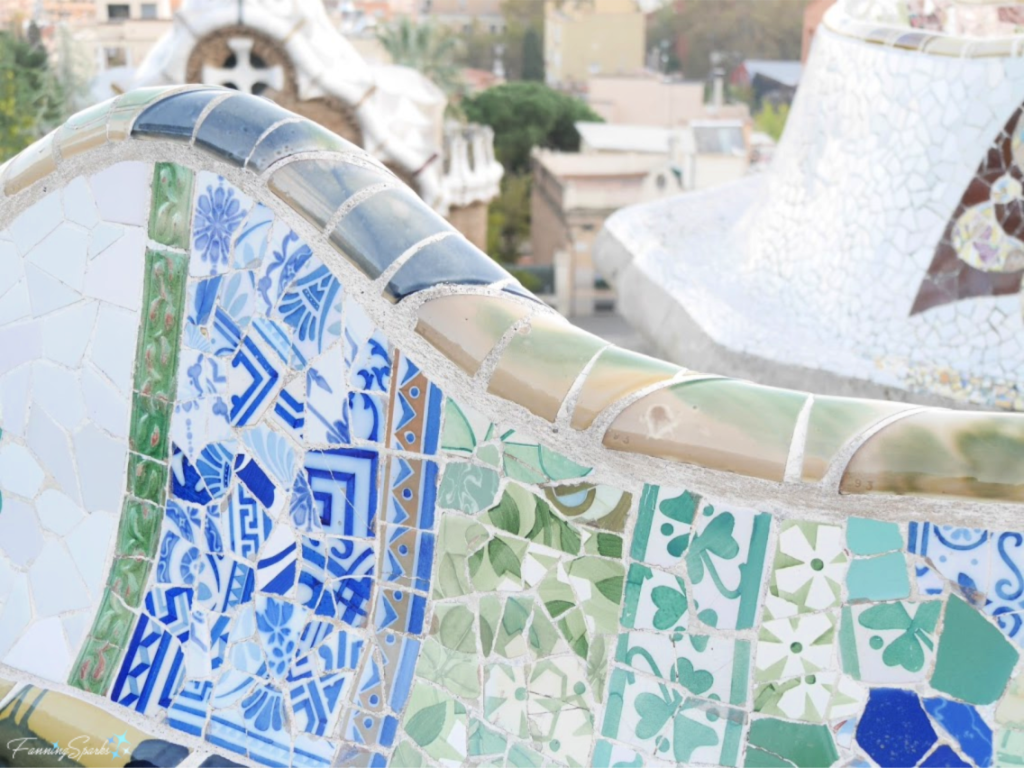

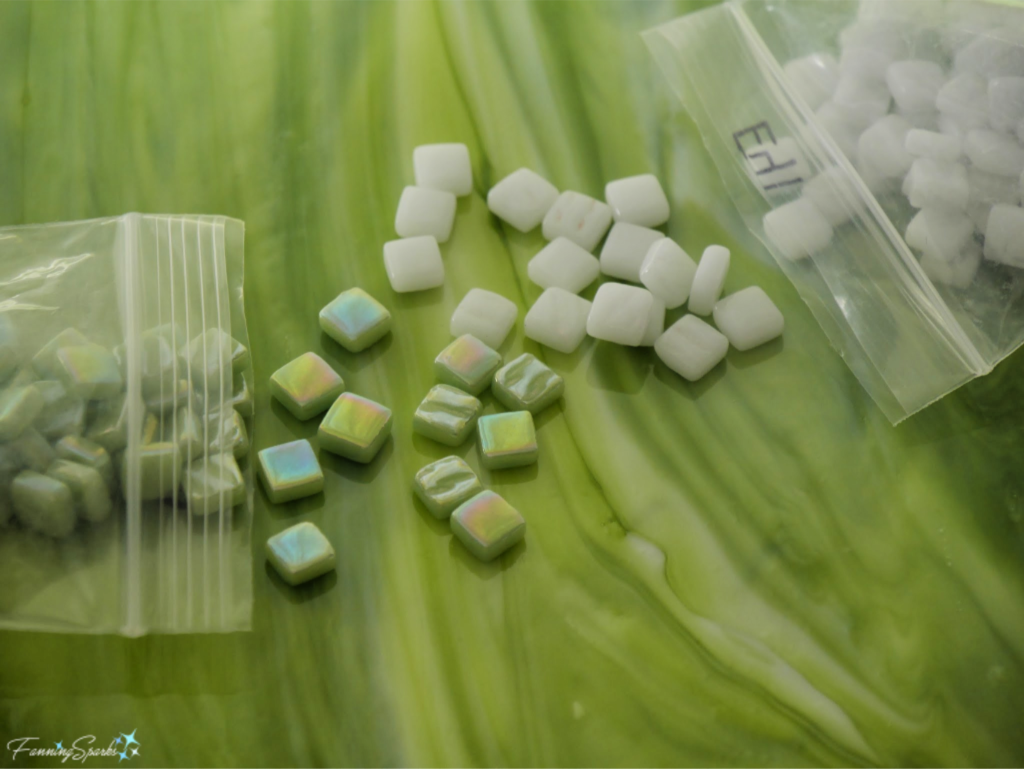
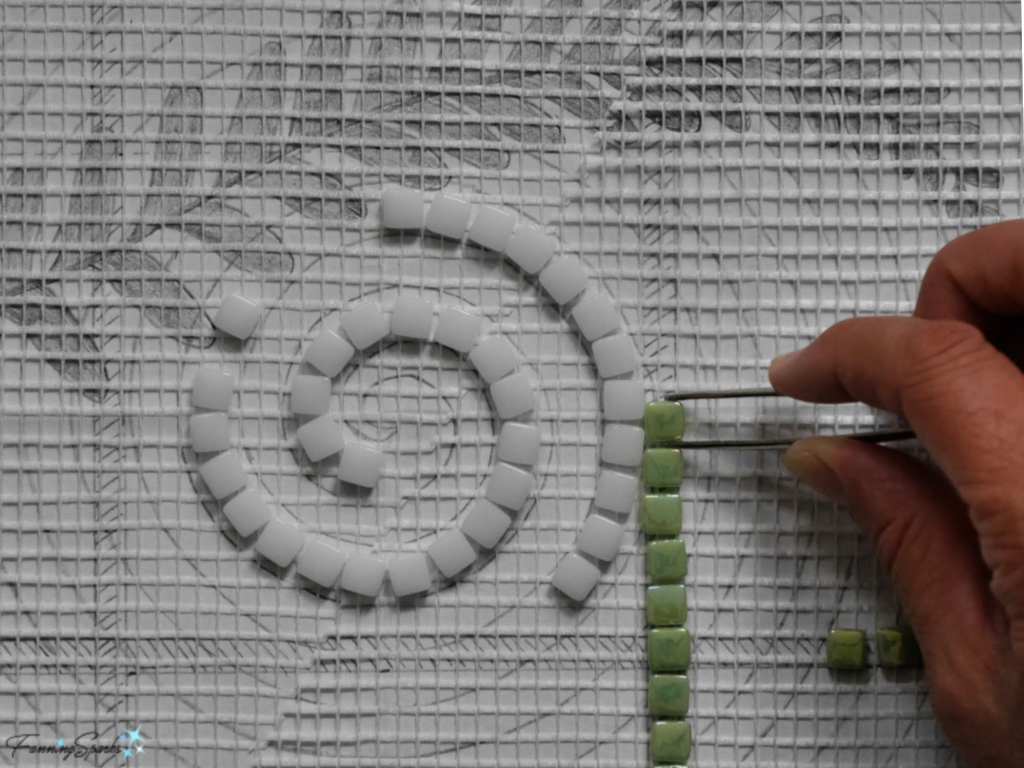

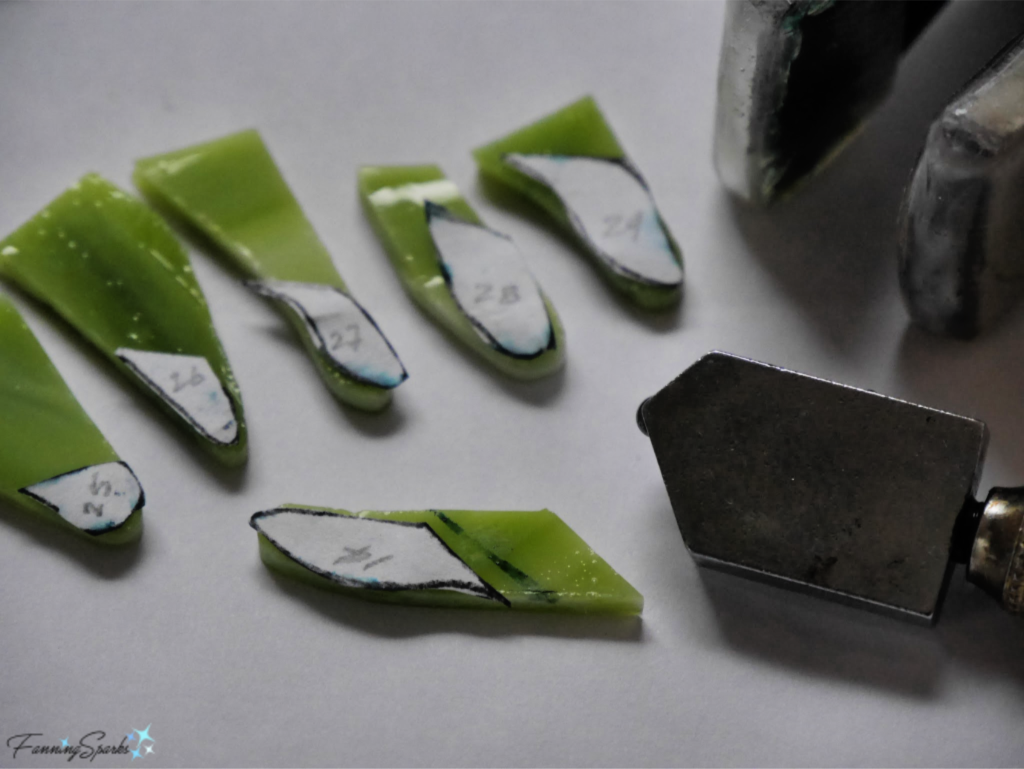


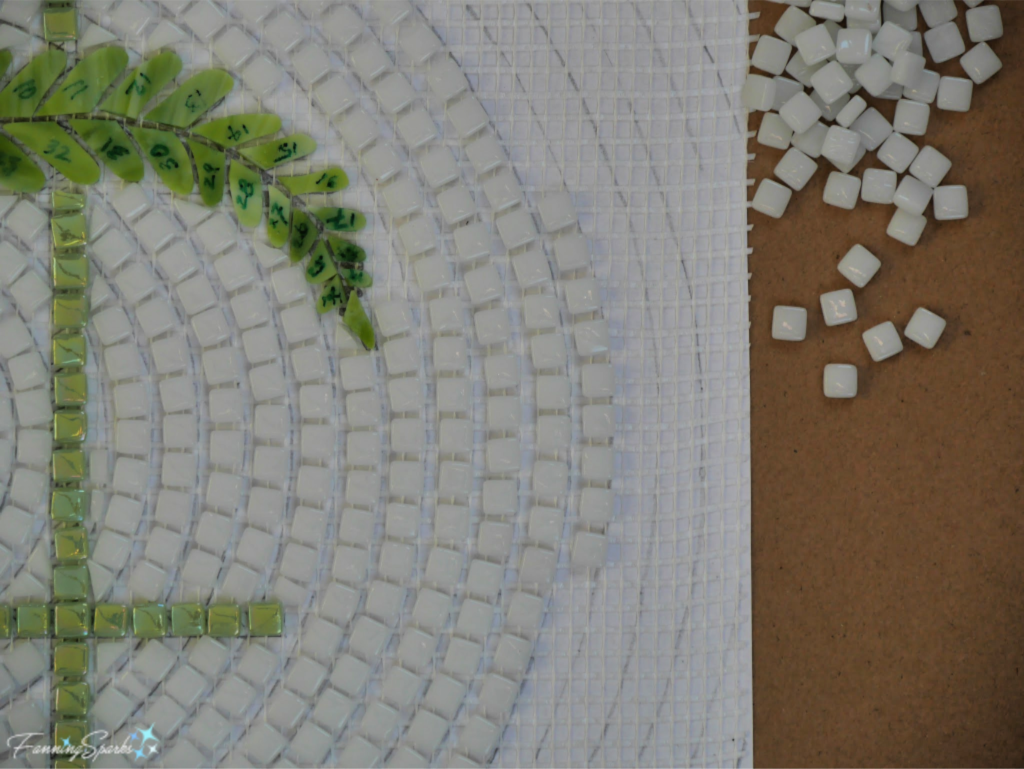
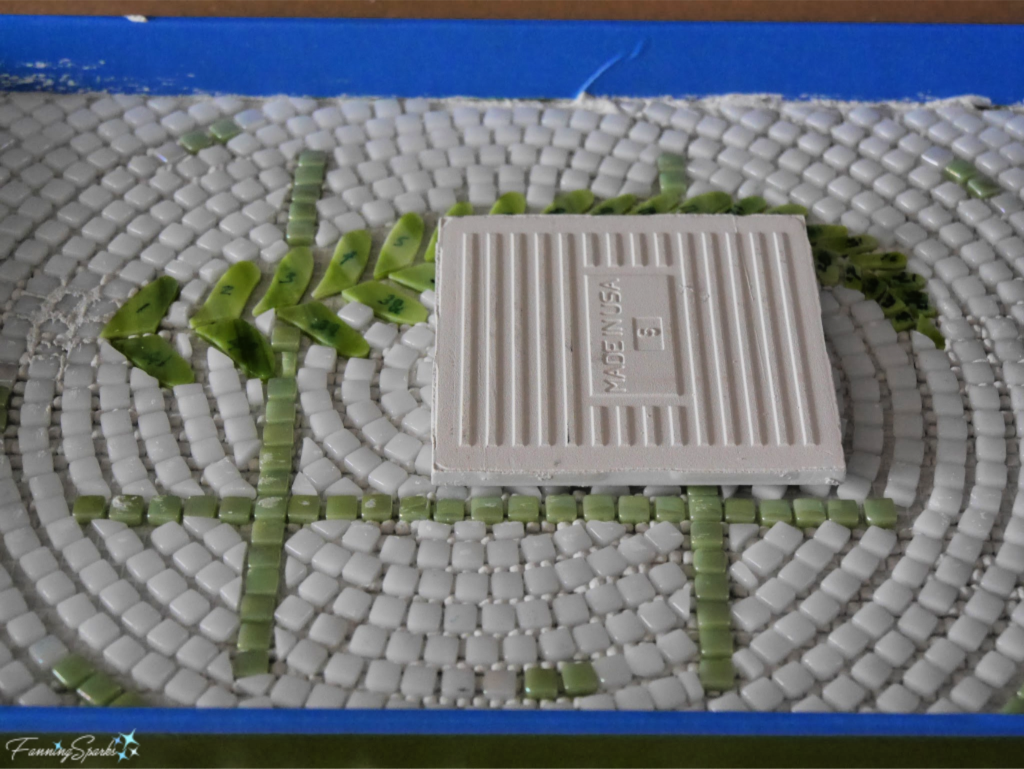
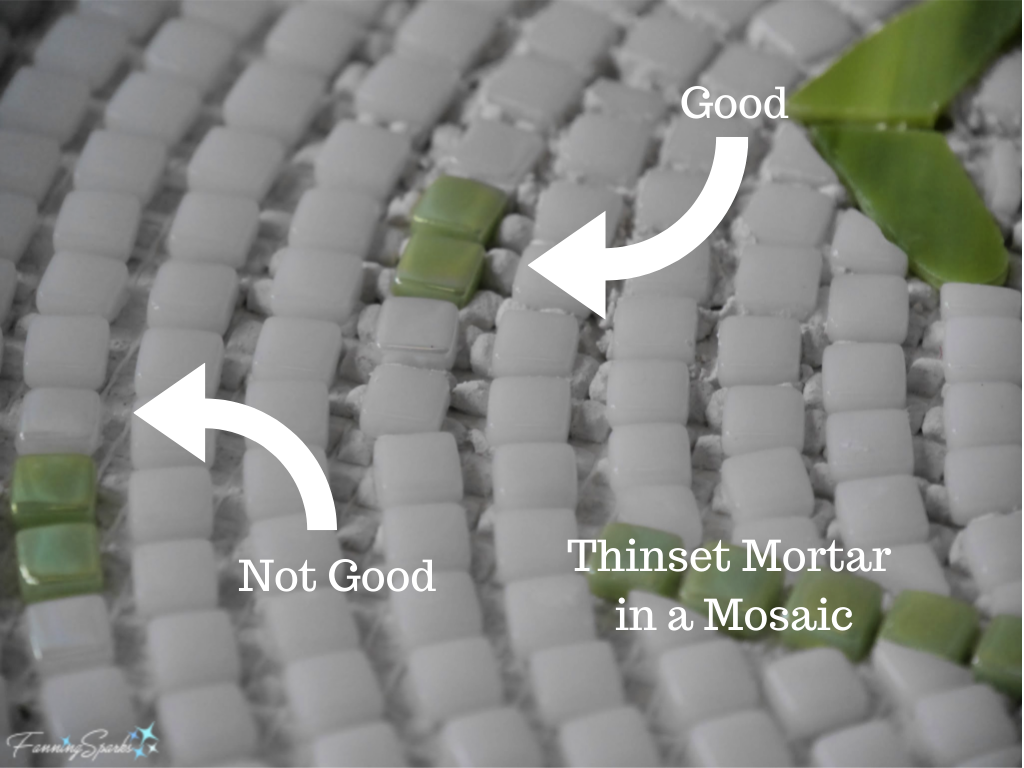
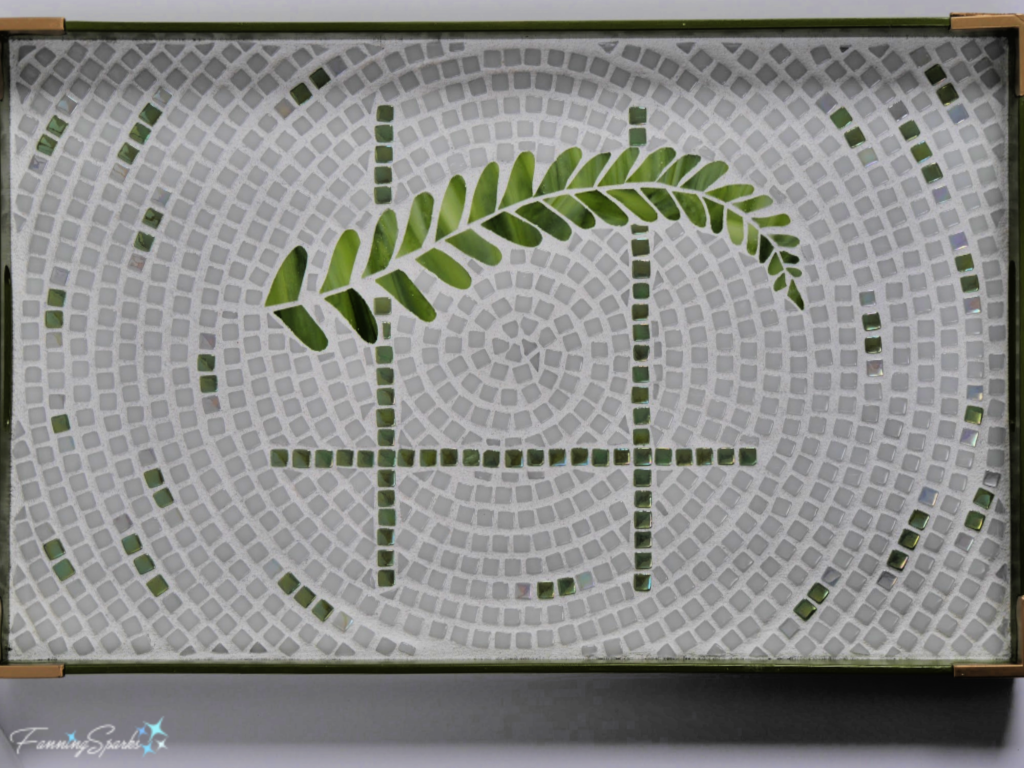
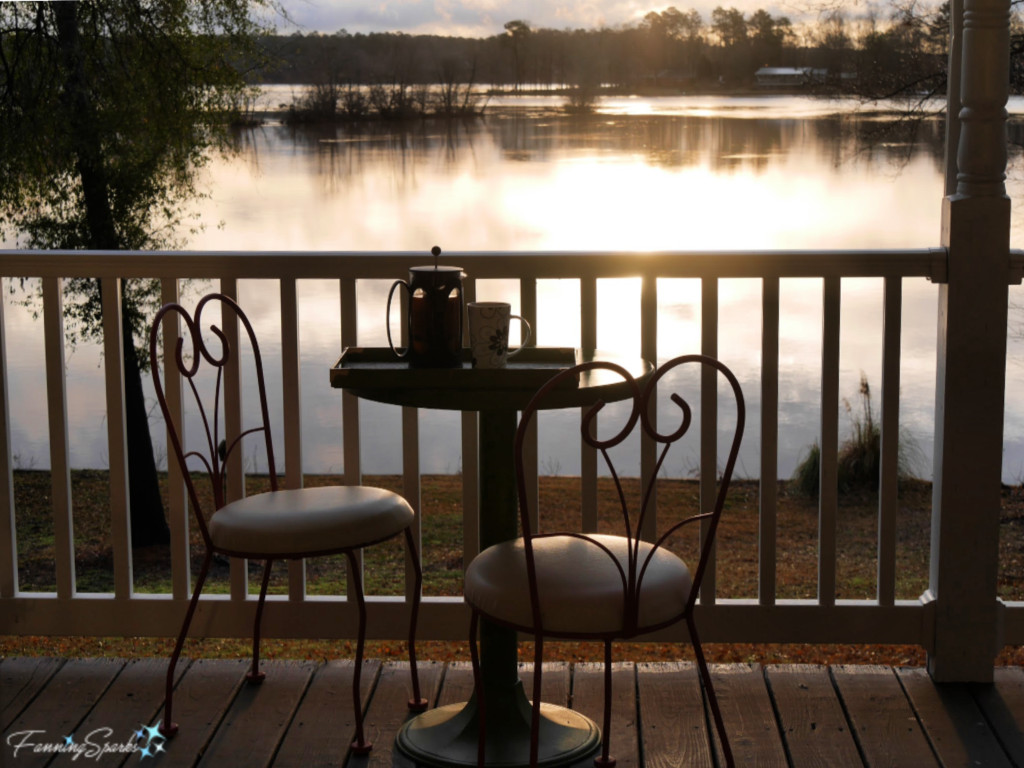
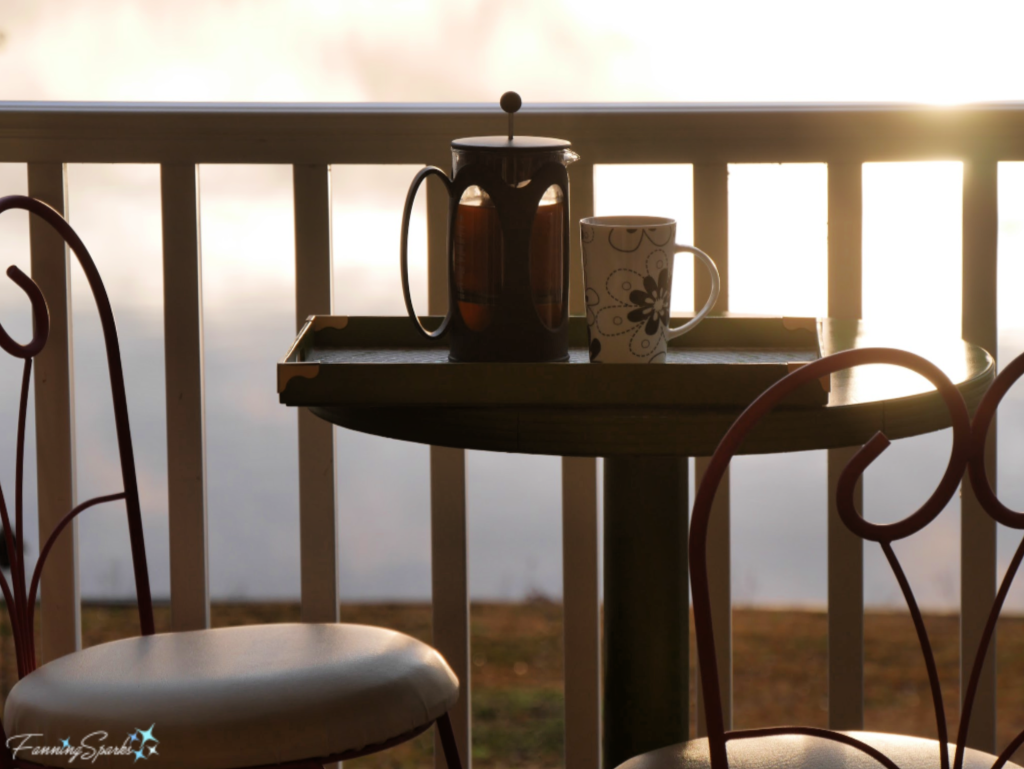


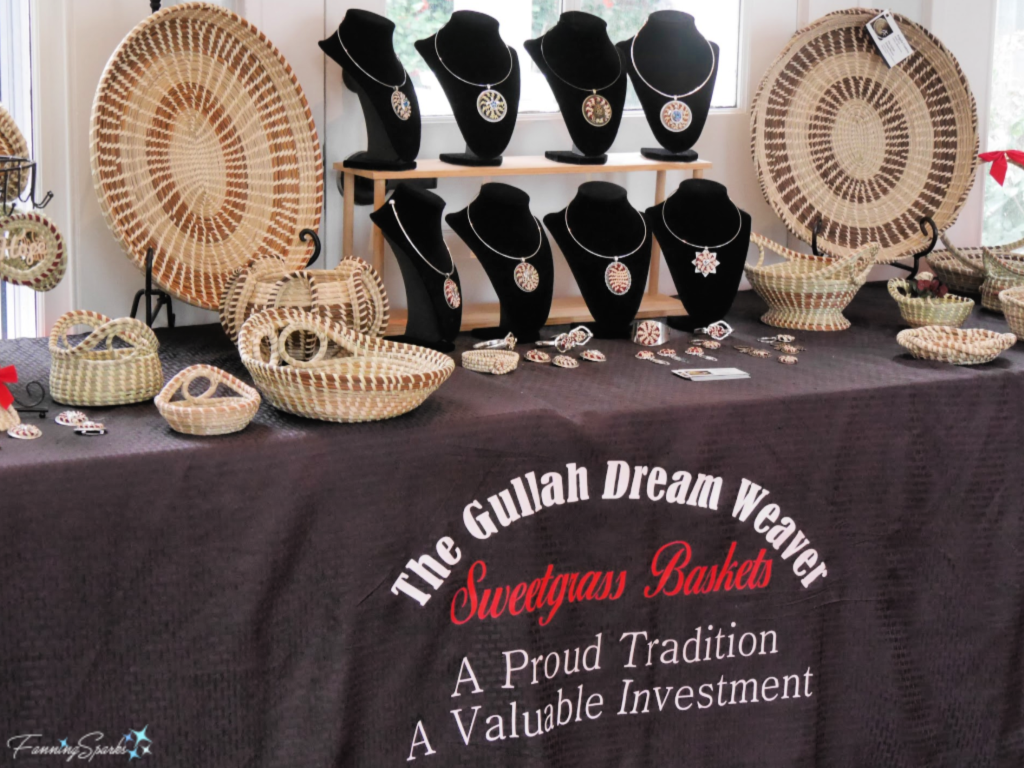
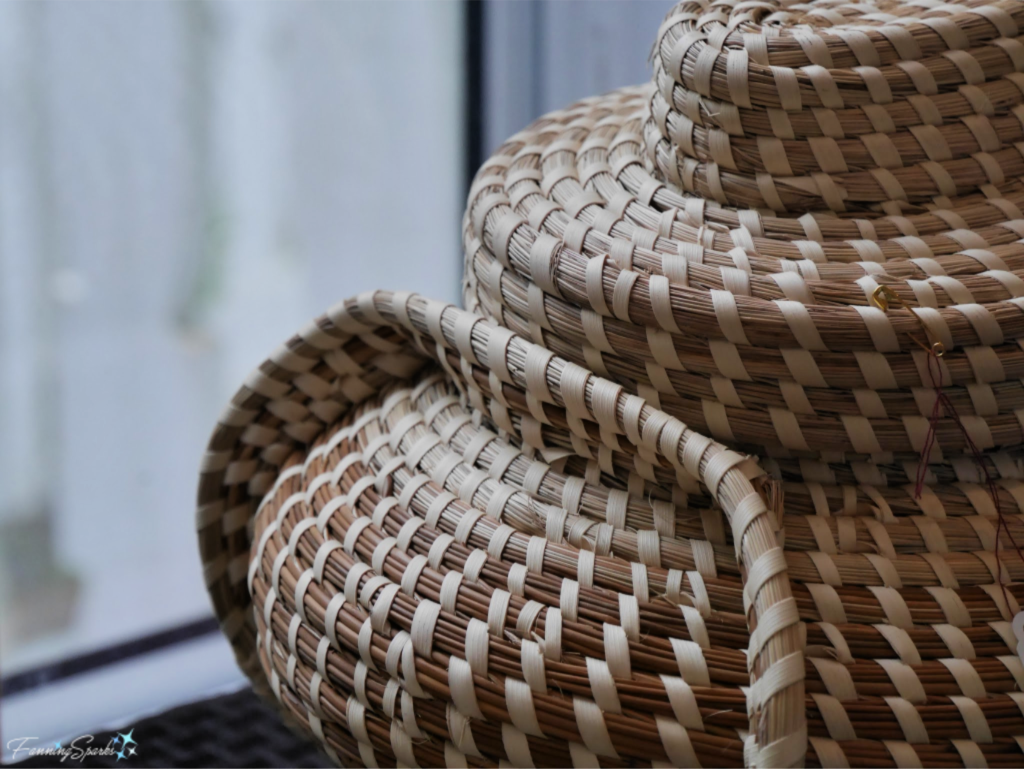
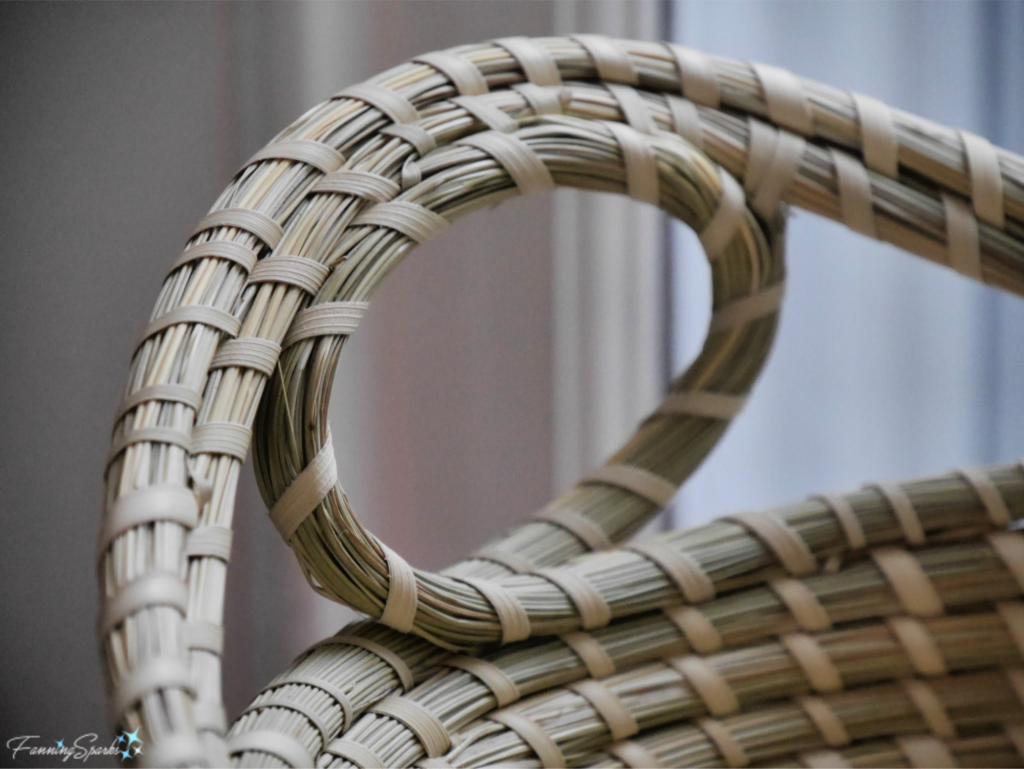
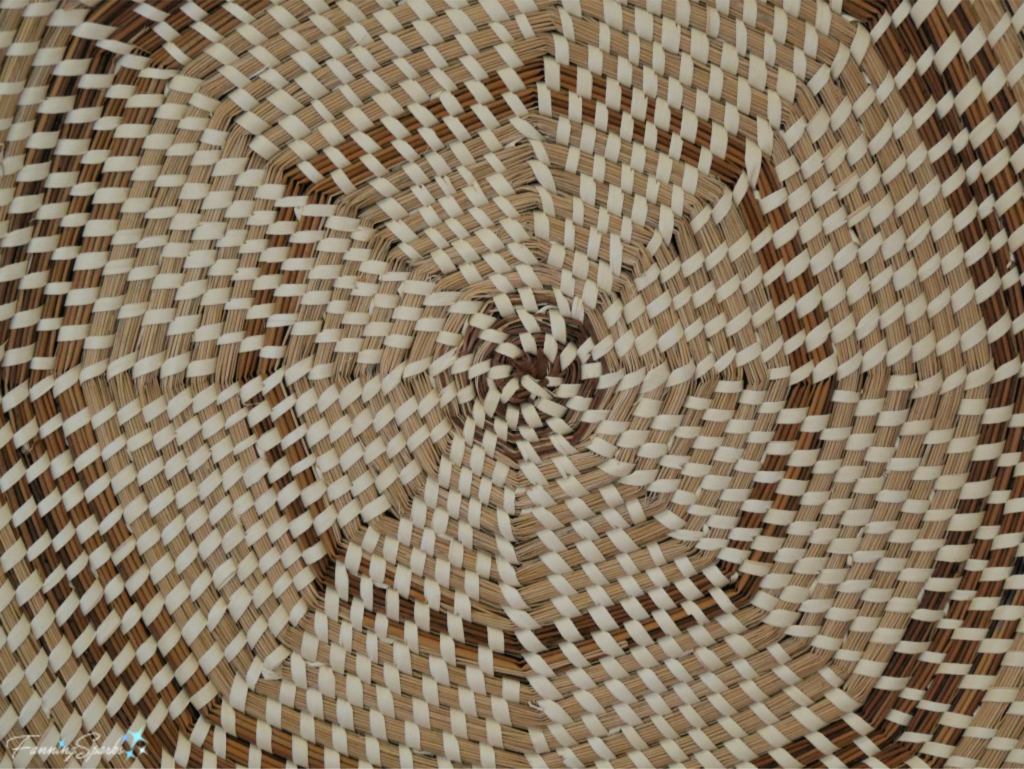 Usually the class learns how to make a small sweetgrass basket. But during the month of December, Daurus switches it up and has the class weave a small sweetgrass wreath. She’s a great instructor—knowledgeable, attentive and patient. To make the most of our time (the class is 2 hours long), Daurus starts the wreathes. Here’s my starter wreath along with the simple tools we used—a pair of scissors and a “nail bone” (actually a repurposed spoon handle).
Usually the class learns how to make a small sweetgrass basket. But during the month of December, Daurus switches it up and has the class weave a small sweetgrass wreath. She’s a great instructor—knowledgeable, attentive and patient. To make the most of our time (the class is 2 hours long), Daurus starts the wreathes. Here’s my starter wreath along with the simple tools we used—a pair of scissors and a “nail bone” (actually a repurposed spoon handle).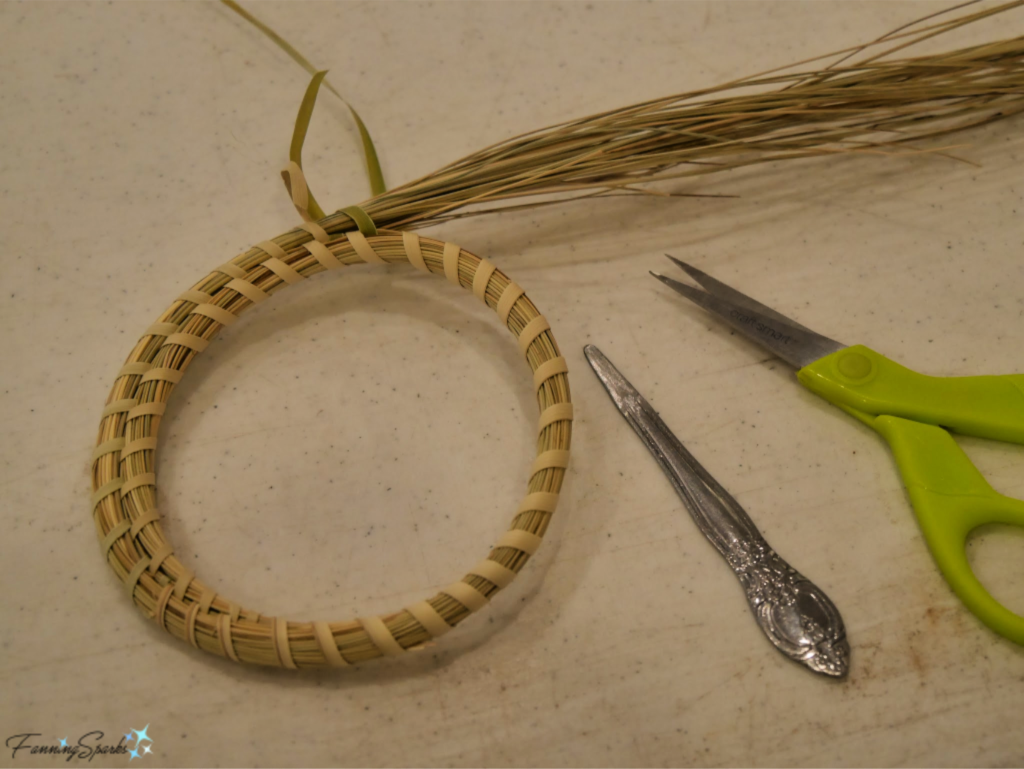
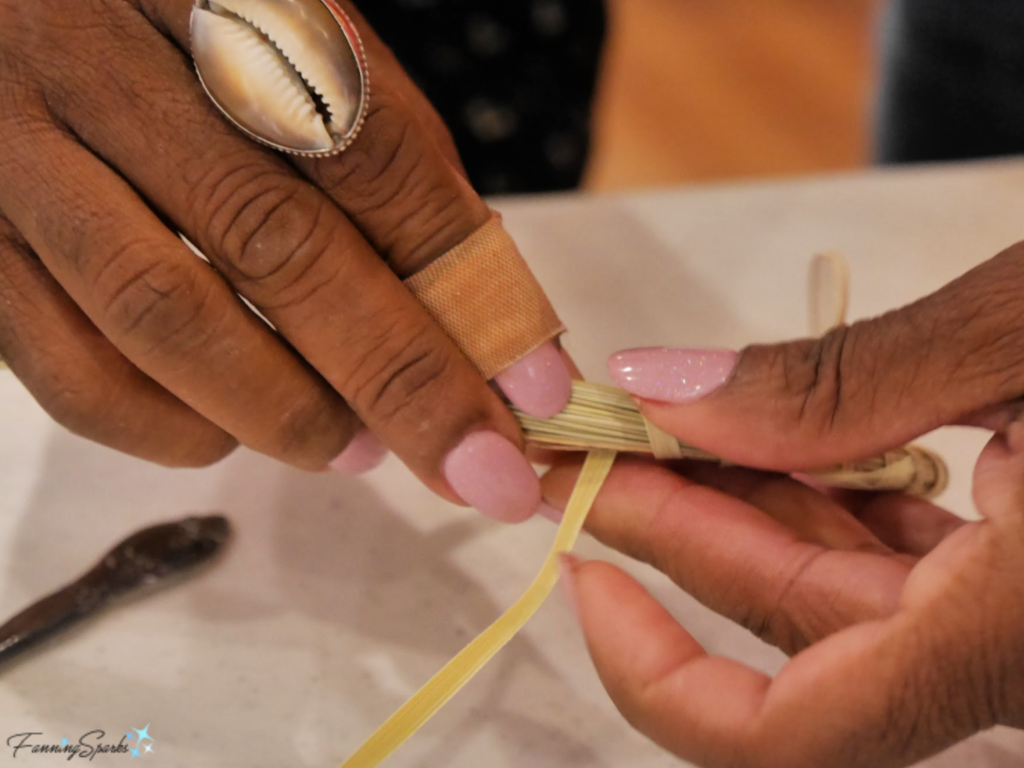
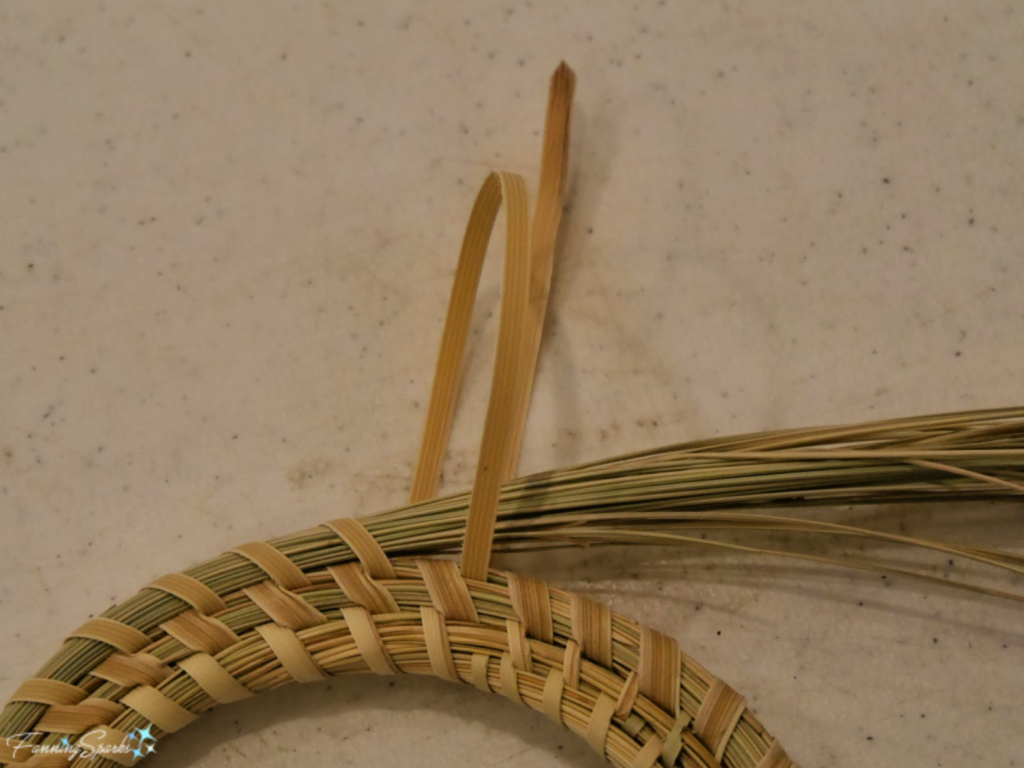
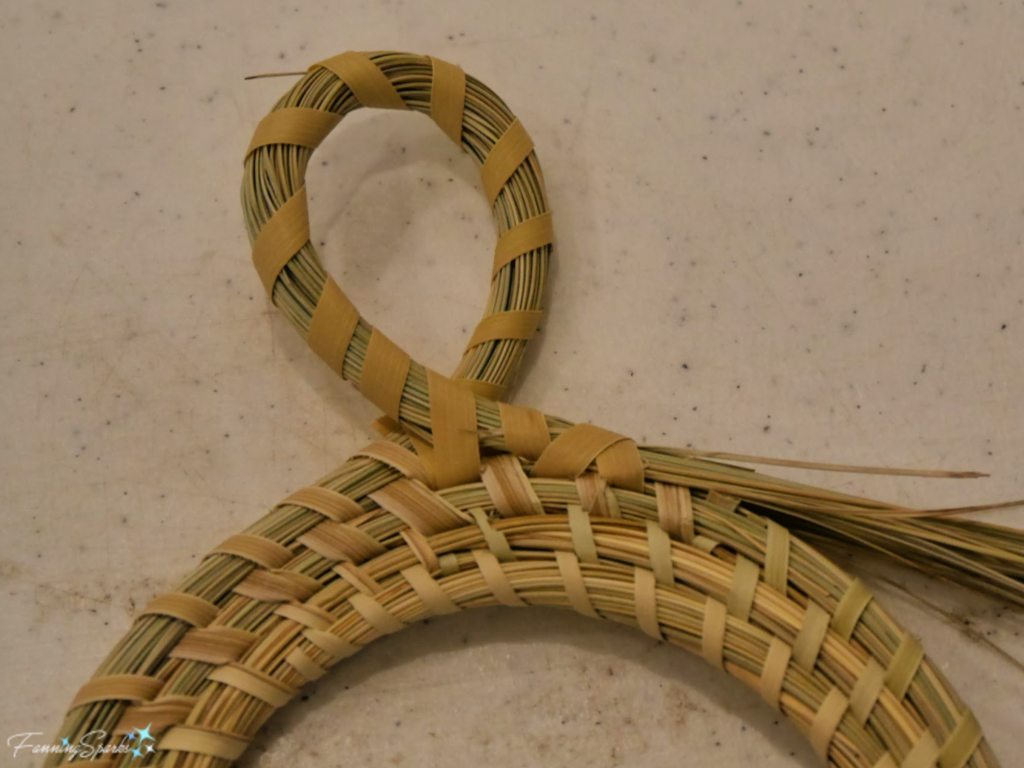
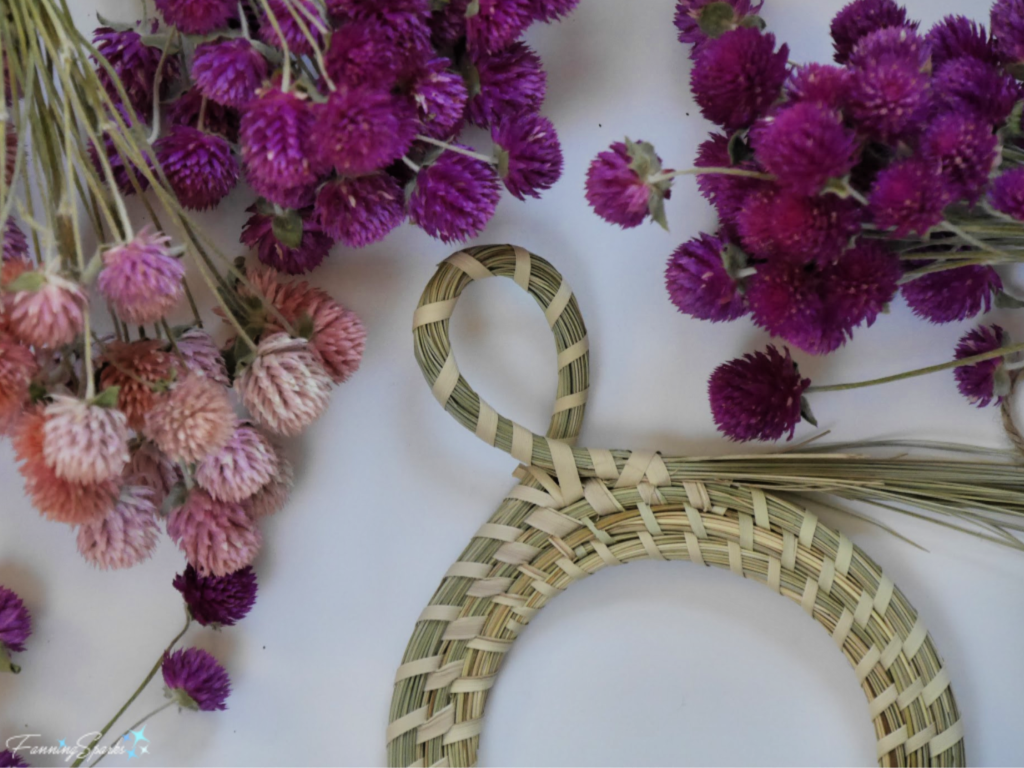
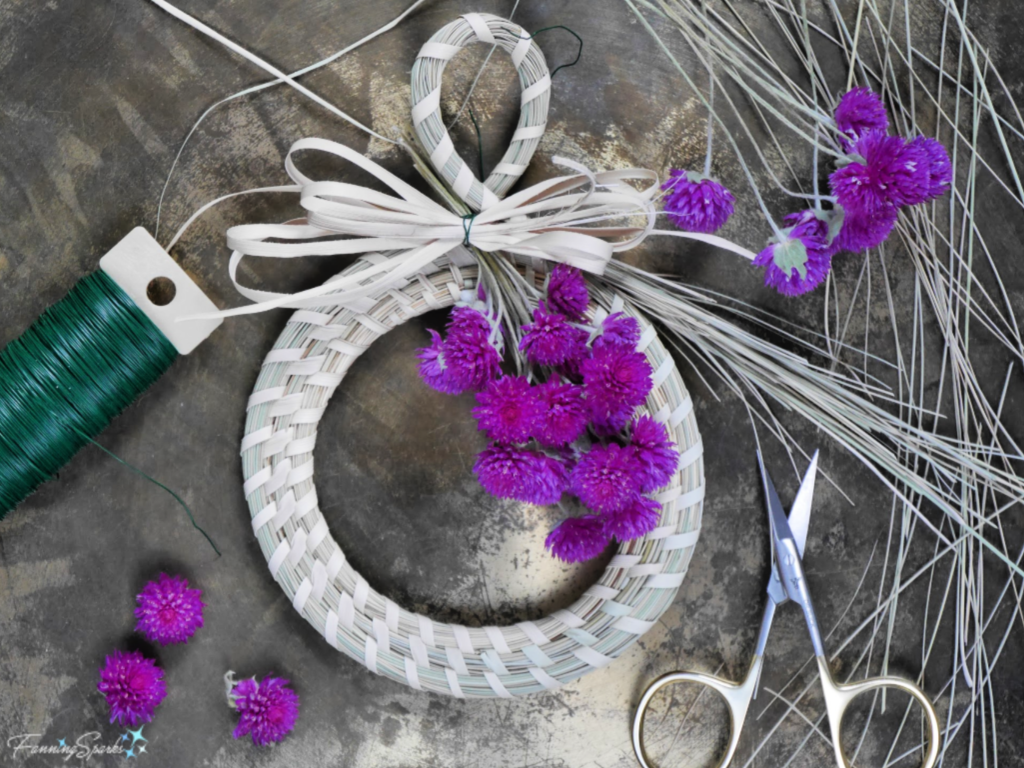
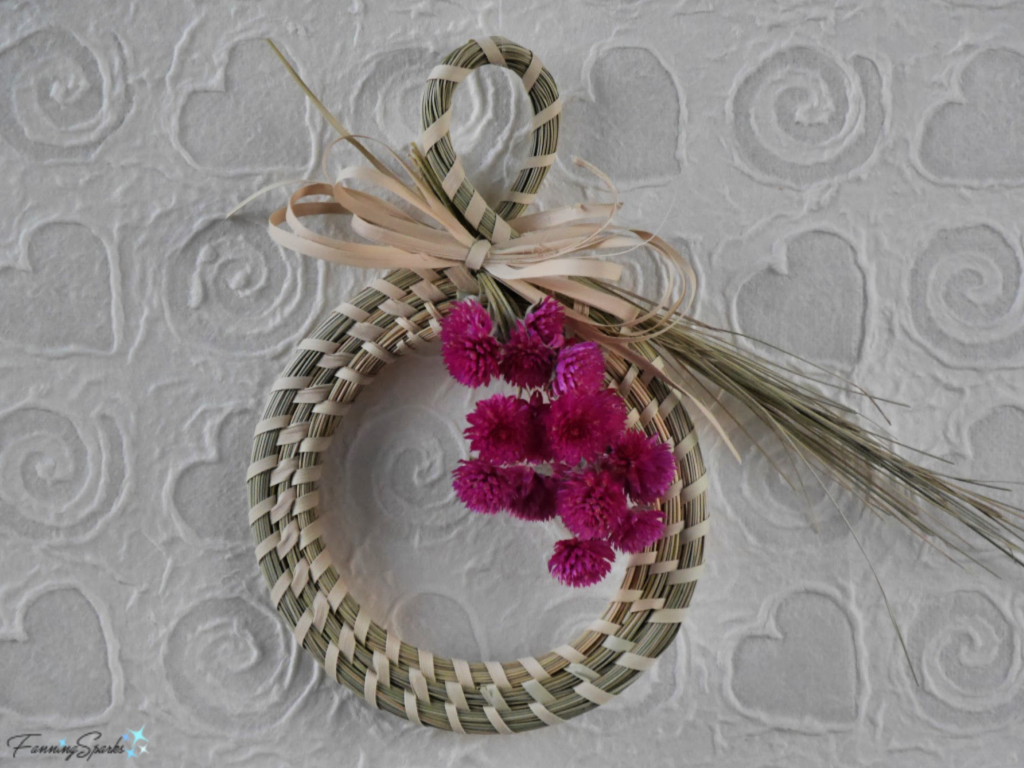
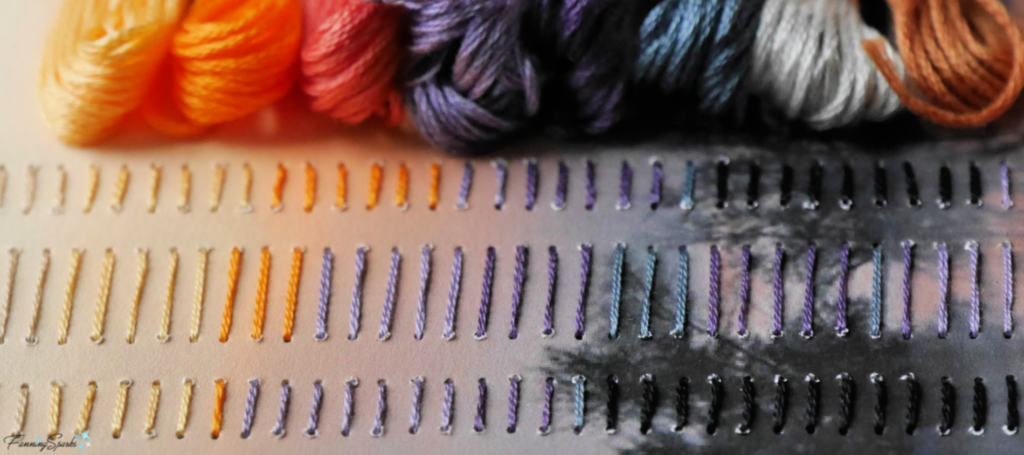
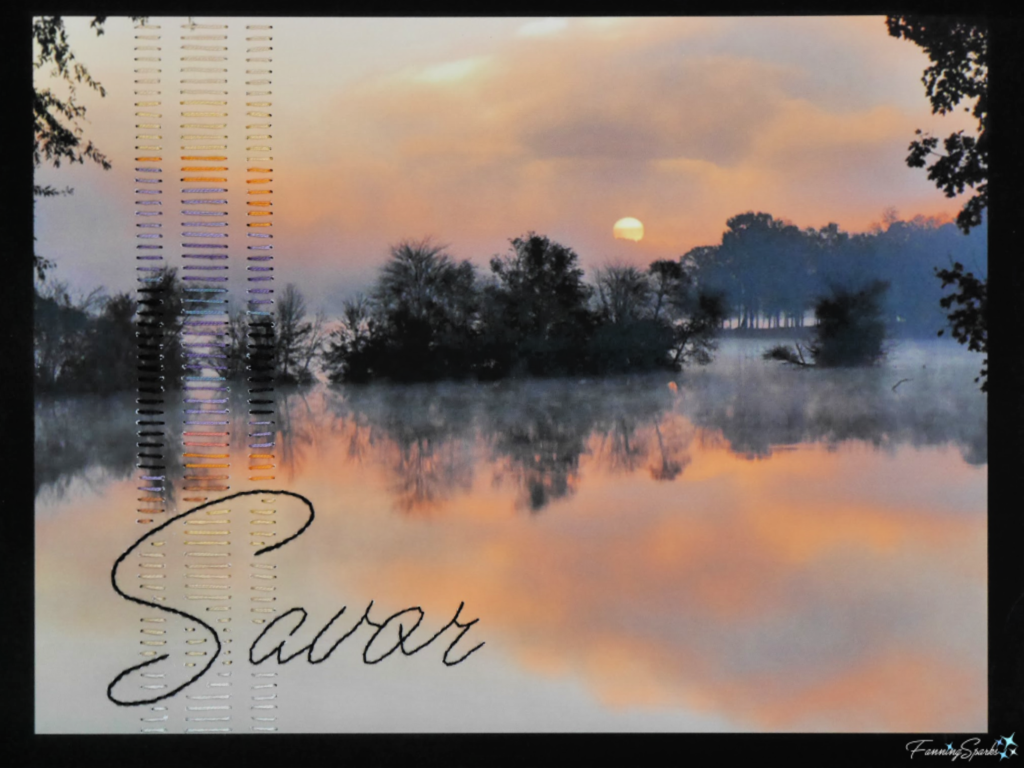
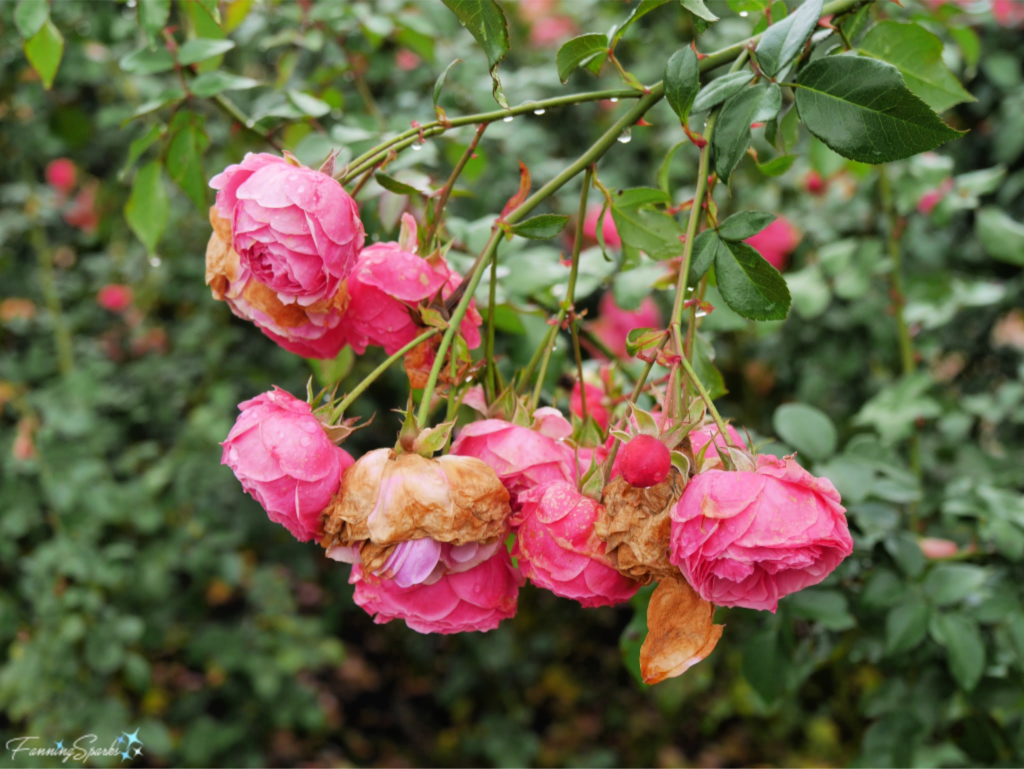
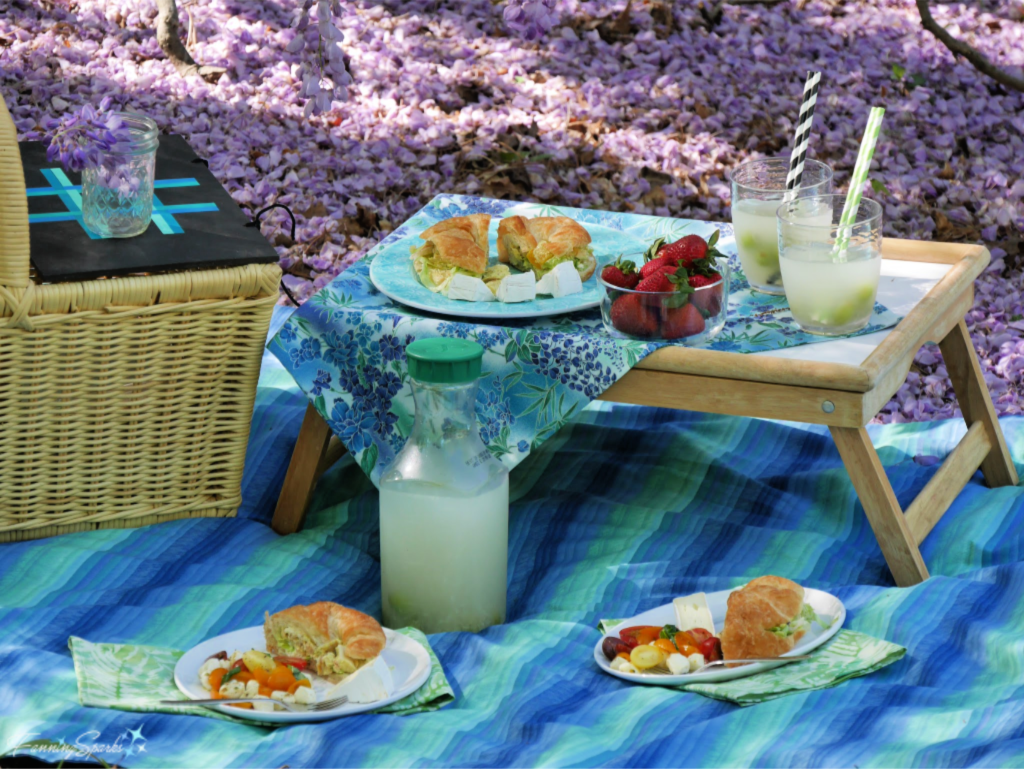

 Most people look forward to and savor the novelty of traveling and exploring new destinations. On a grander scale, having the once-in-a-lifetime experience to watch this magnificent leopard while on an African safari was definitely something I savored.
Most people look forward to and savor the novelty of traveling and exploring new destinations. On a grander scale, having the once-in-a-lifetime experience to watch this magnificent leopard while on an African safari was definitely something I savored.





